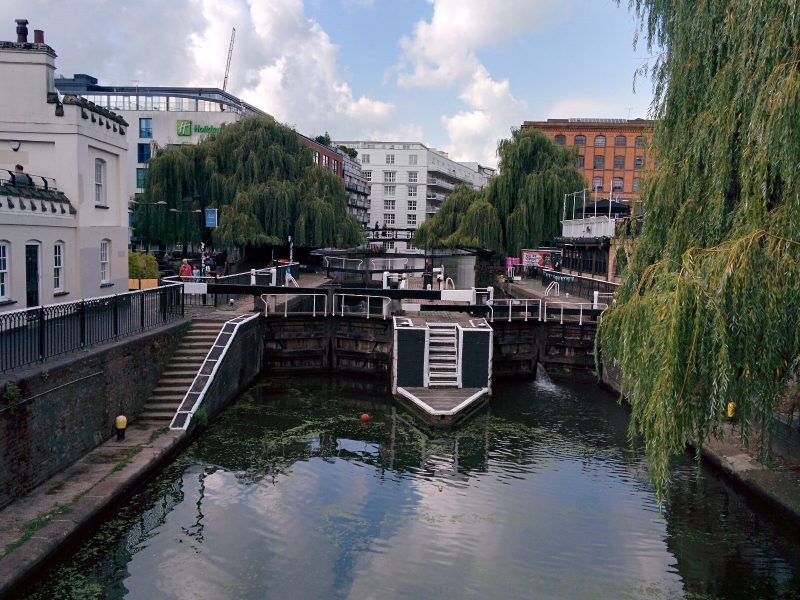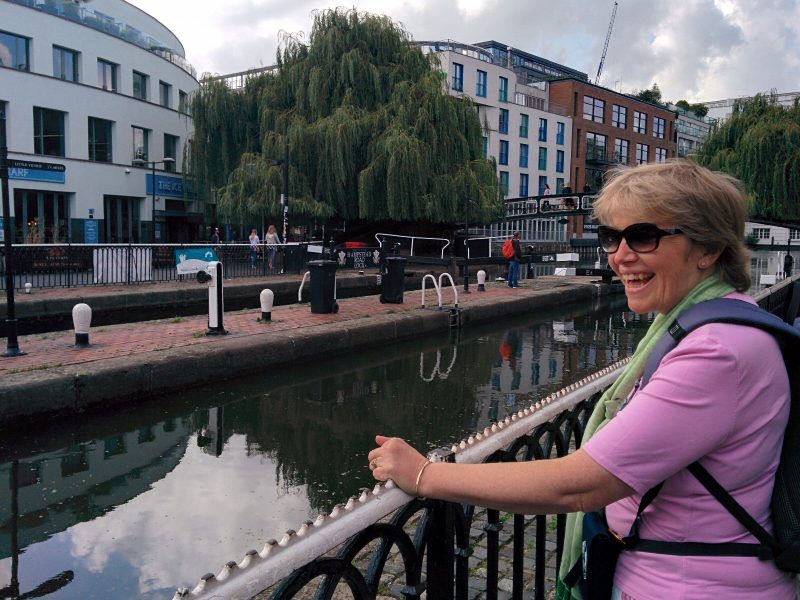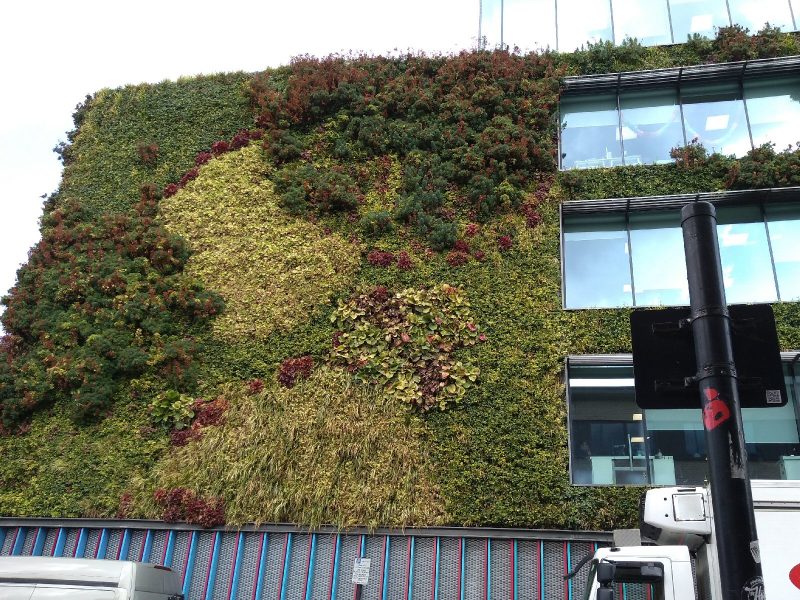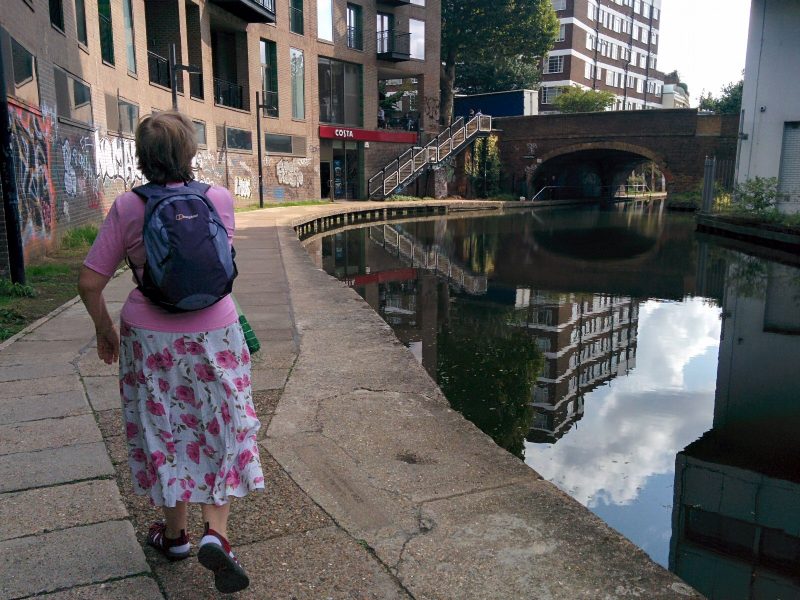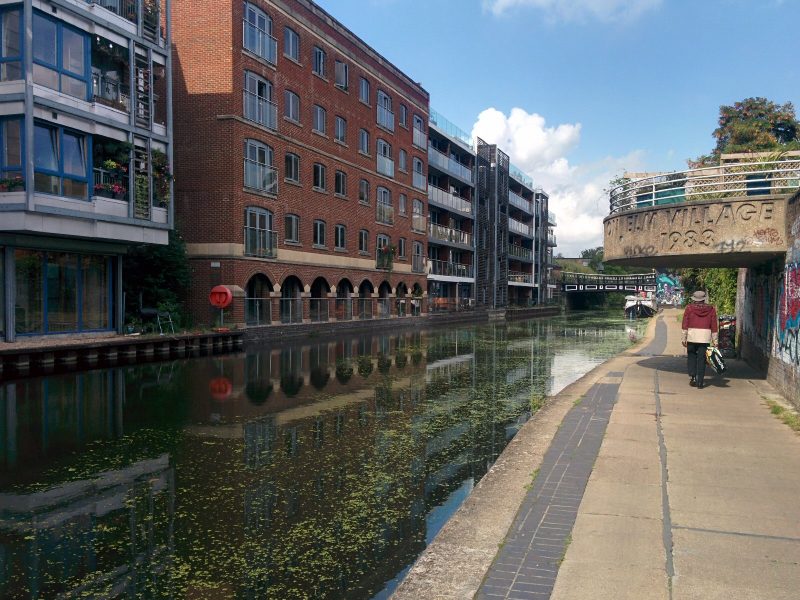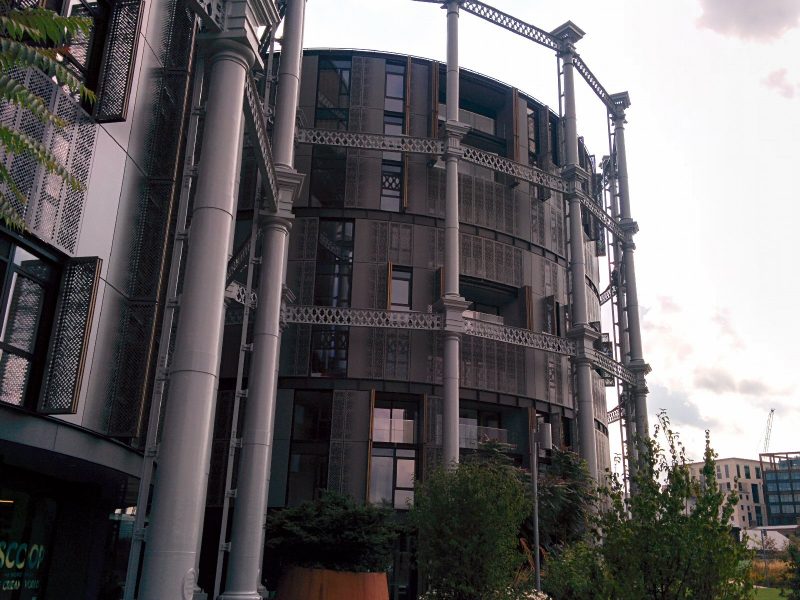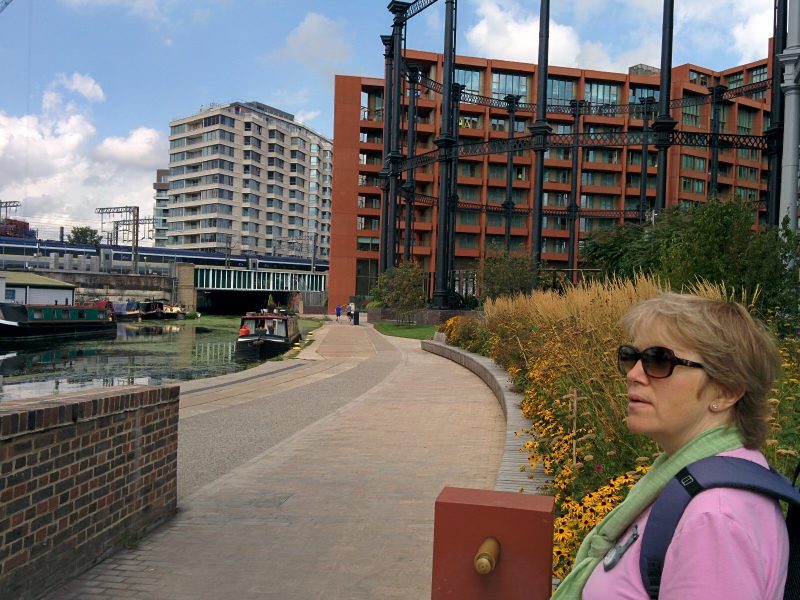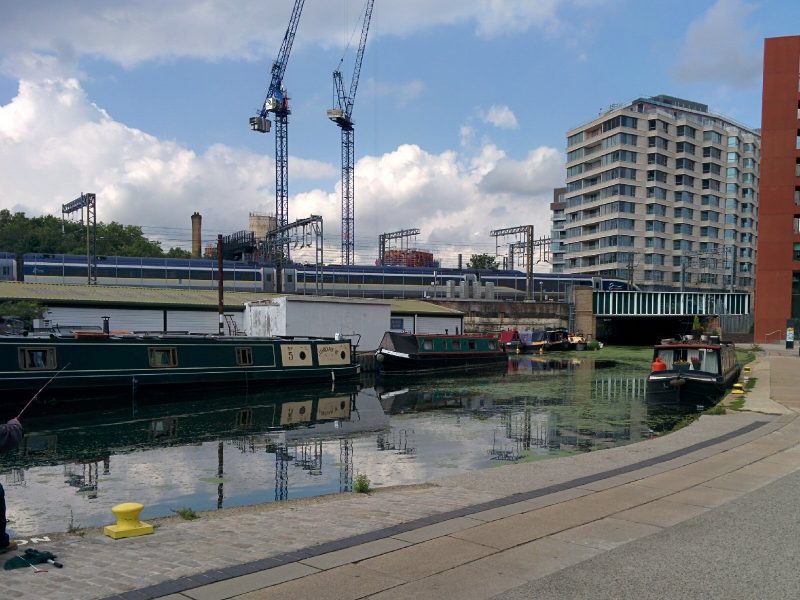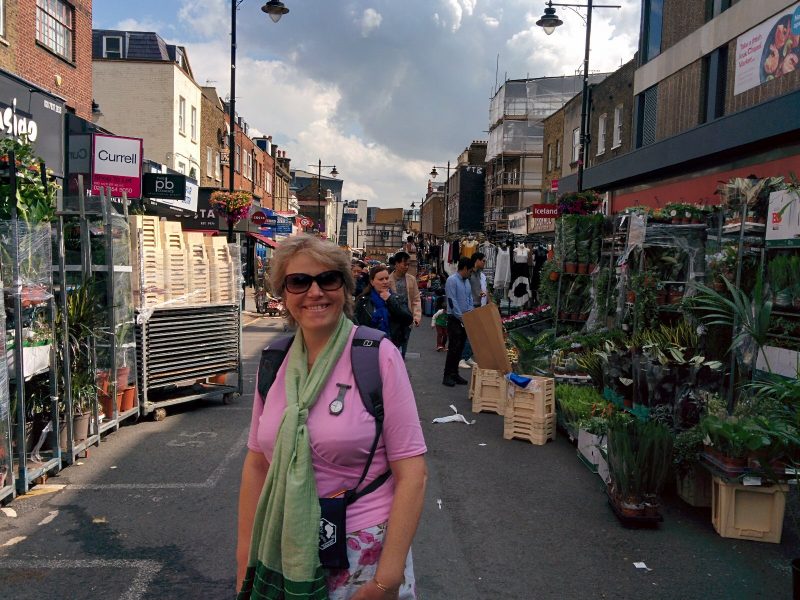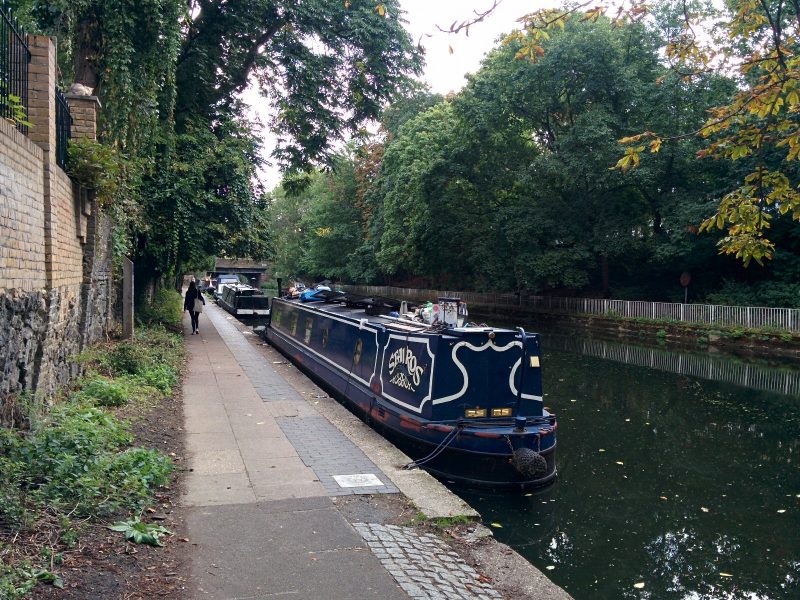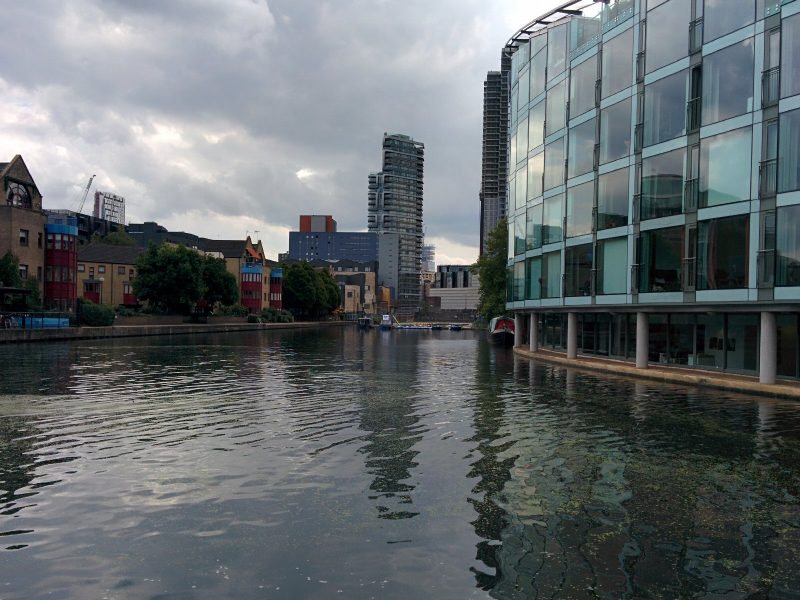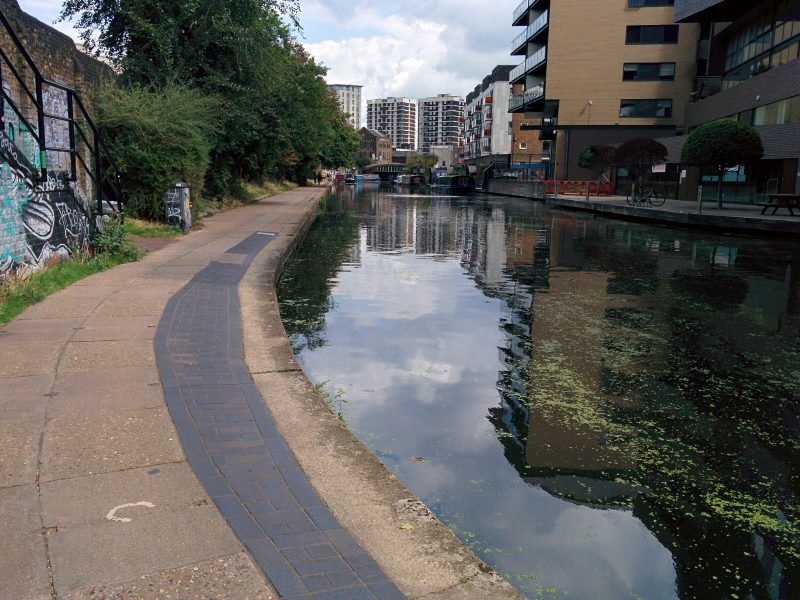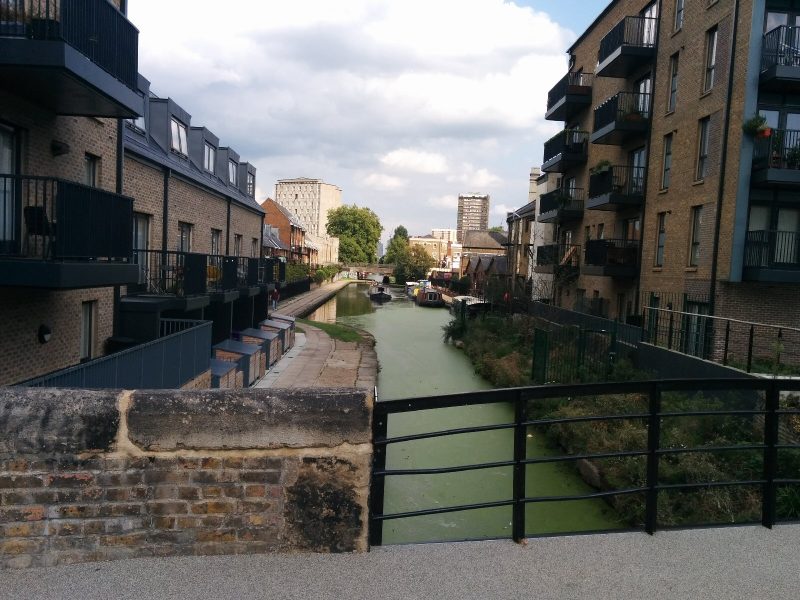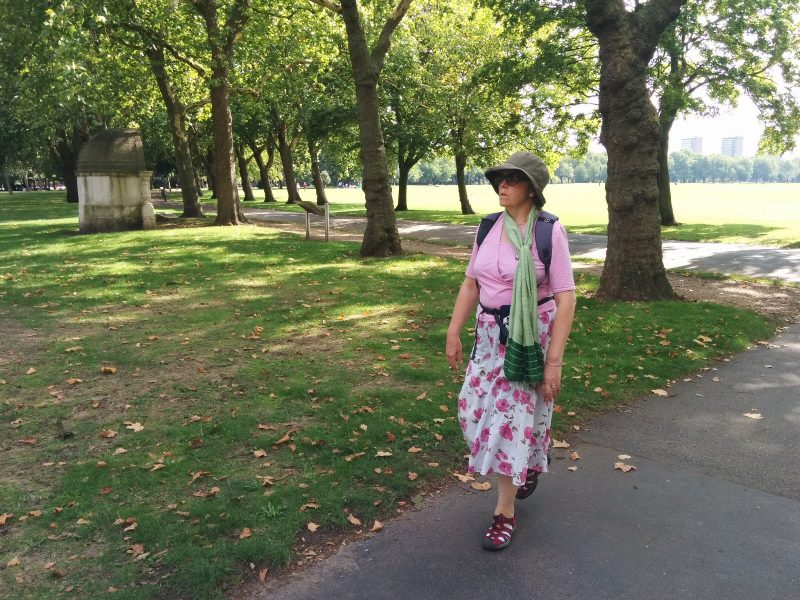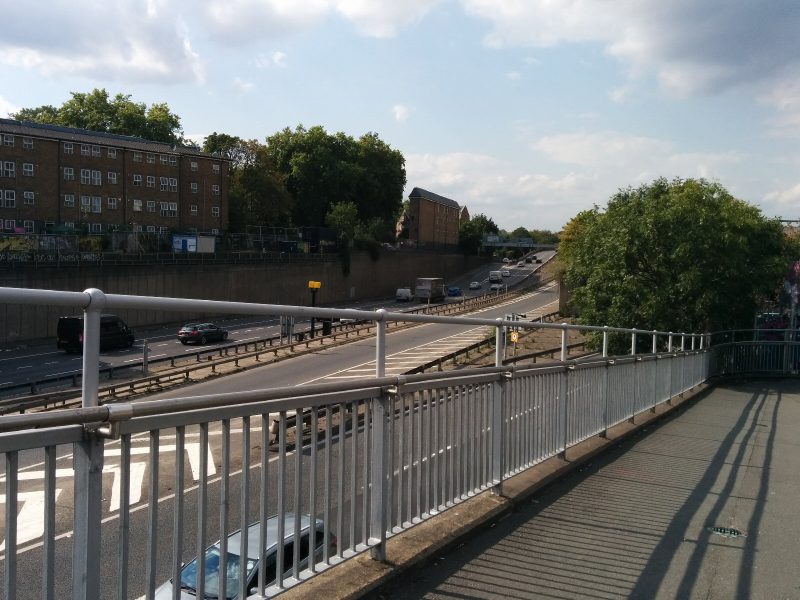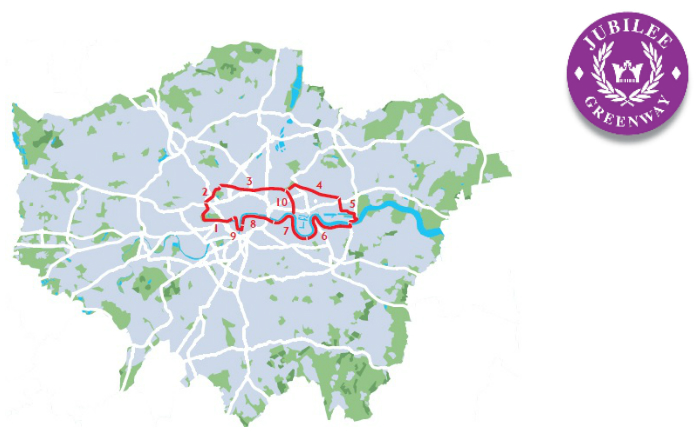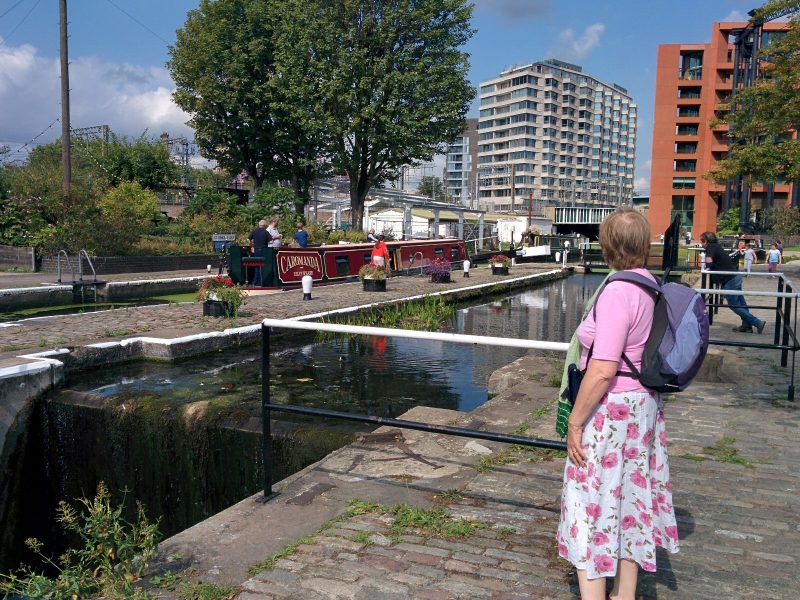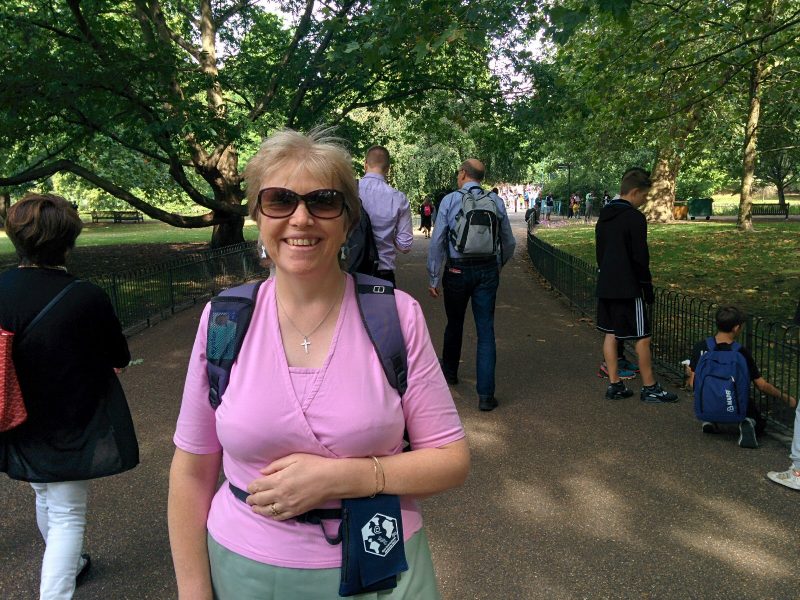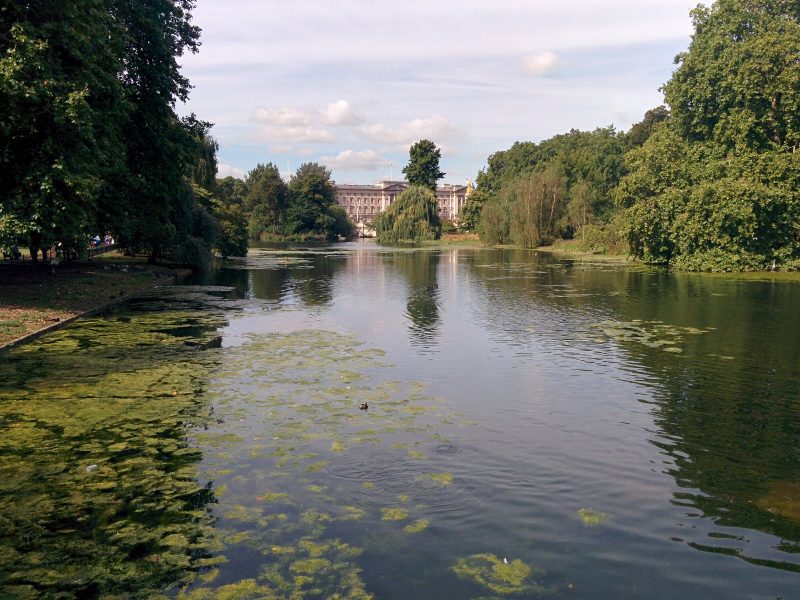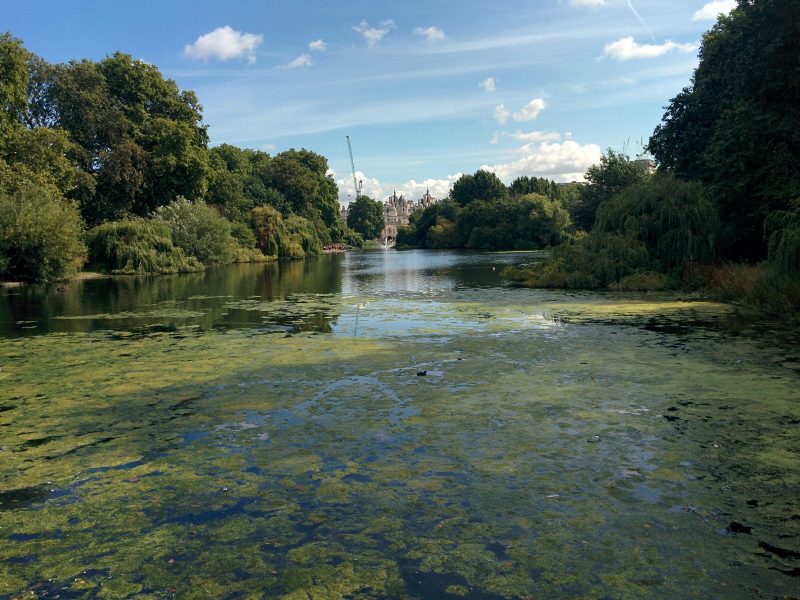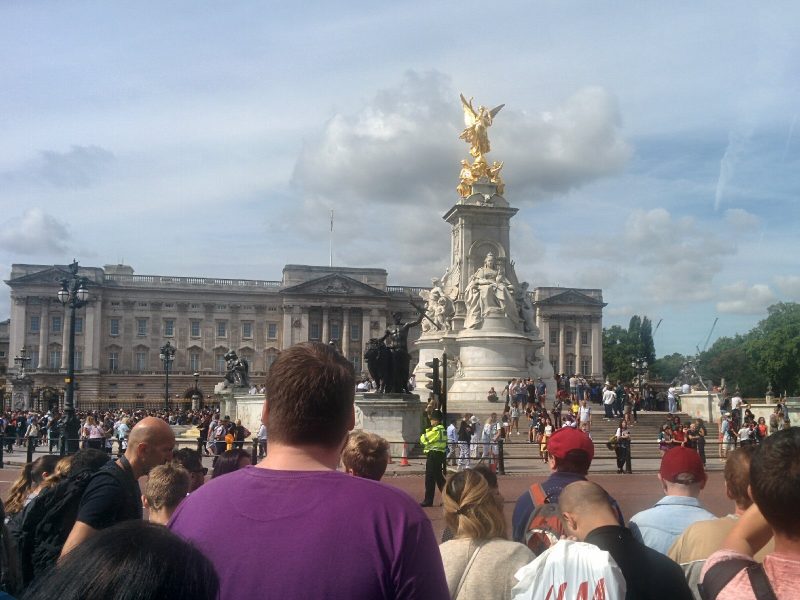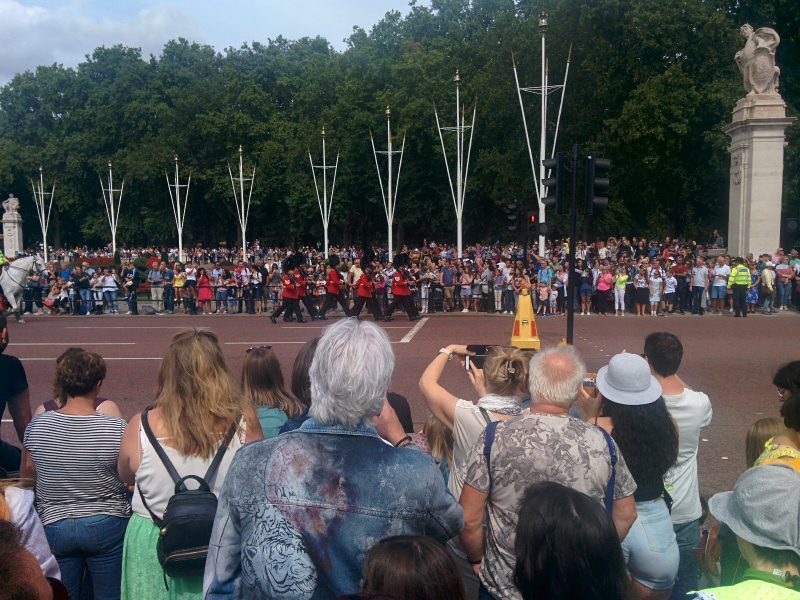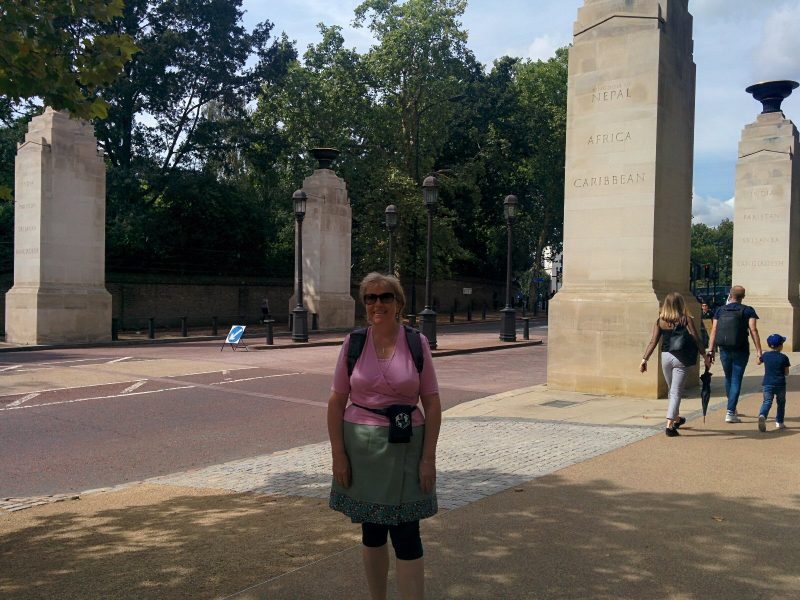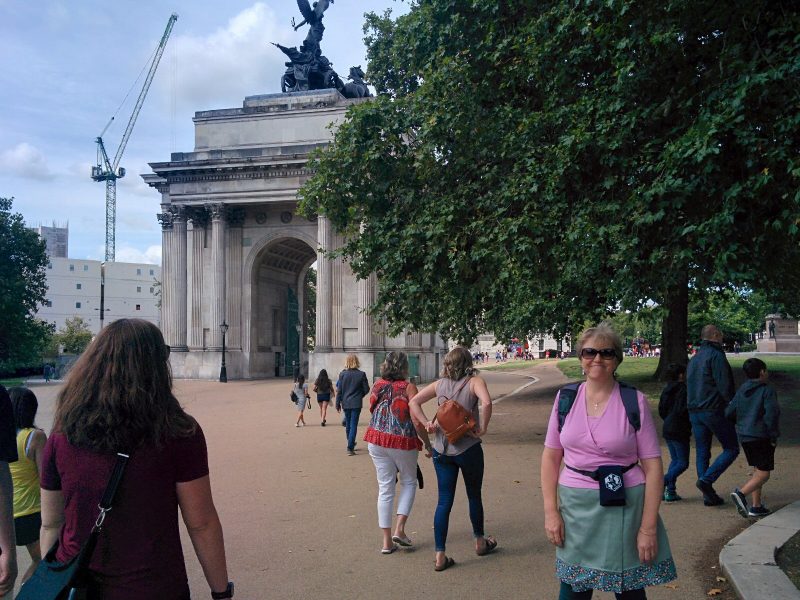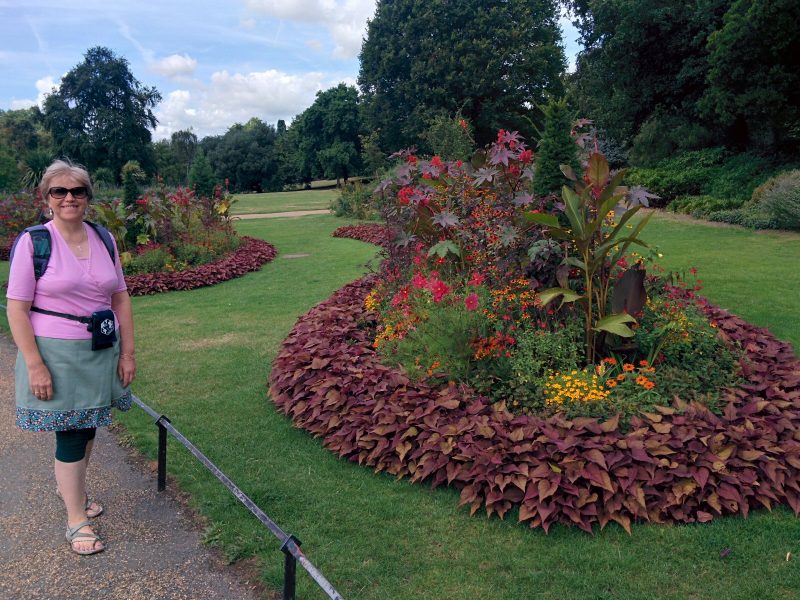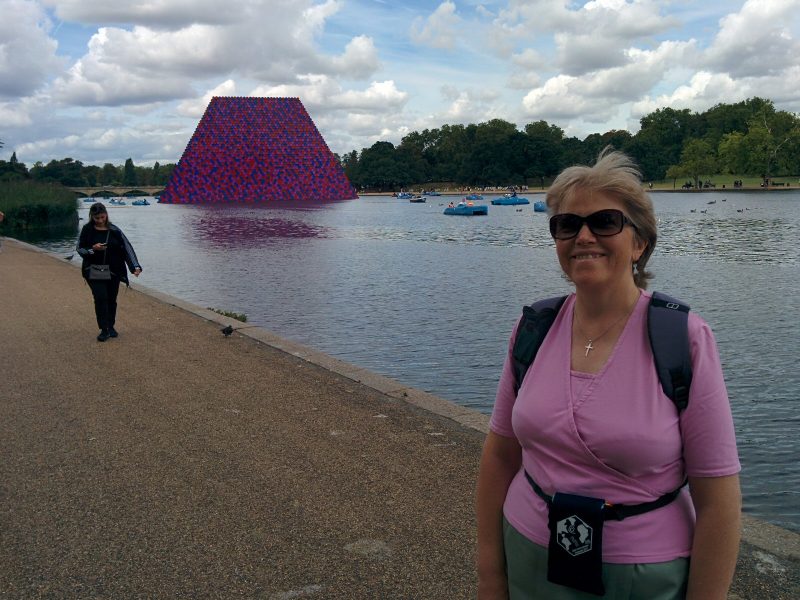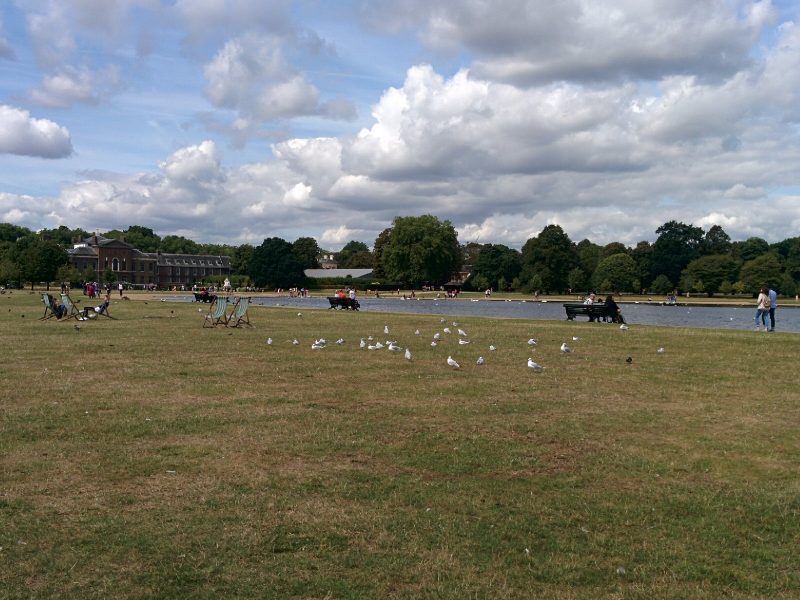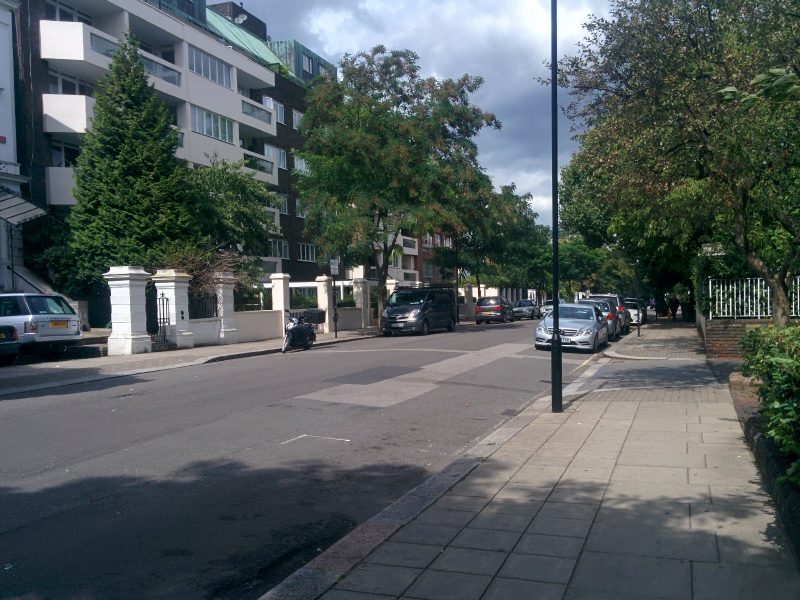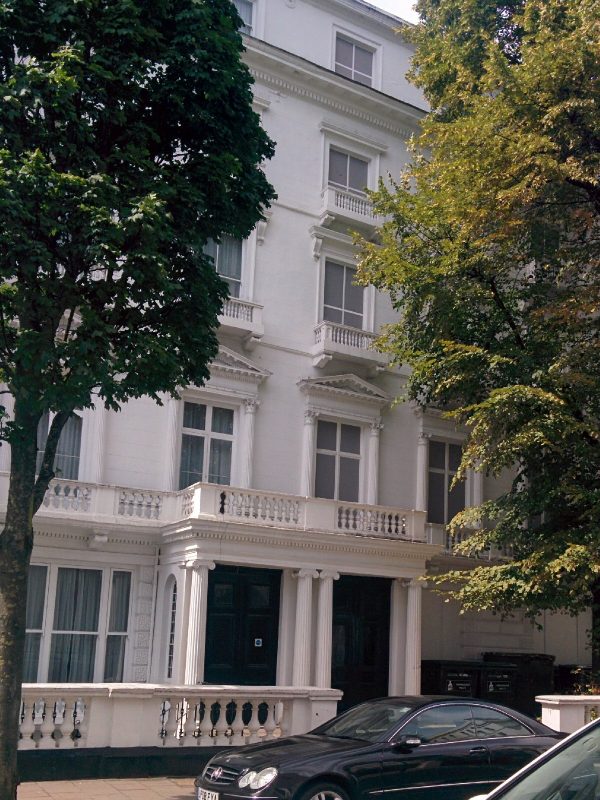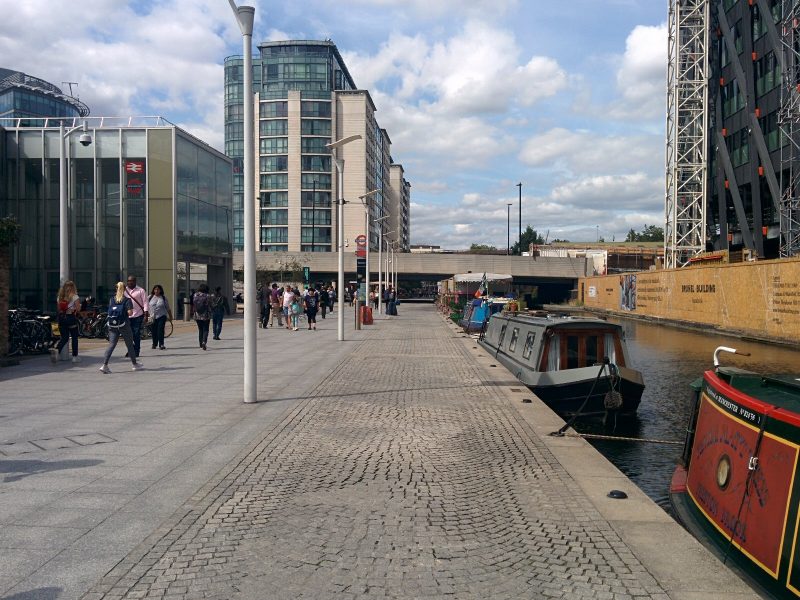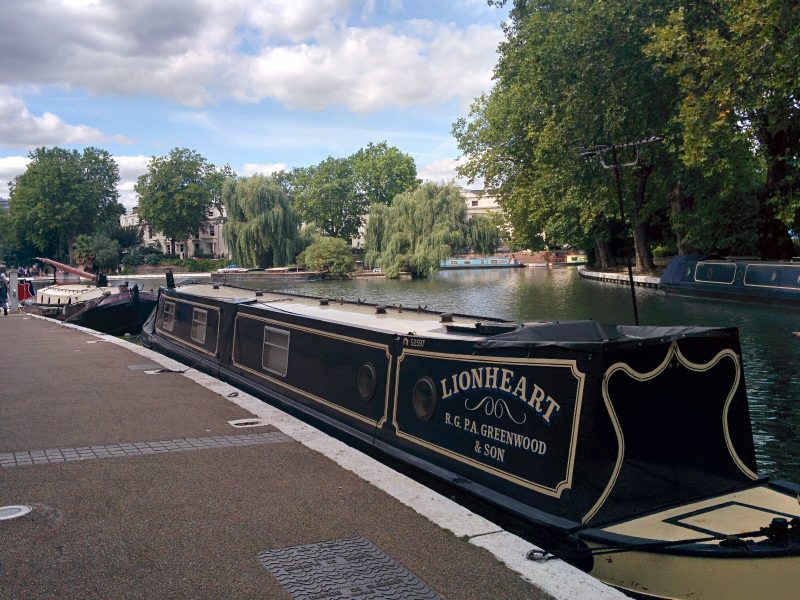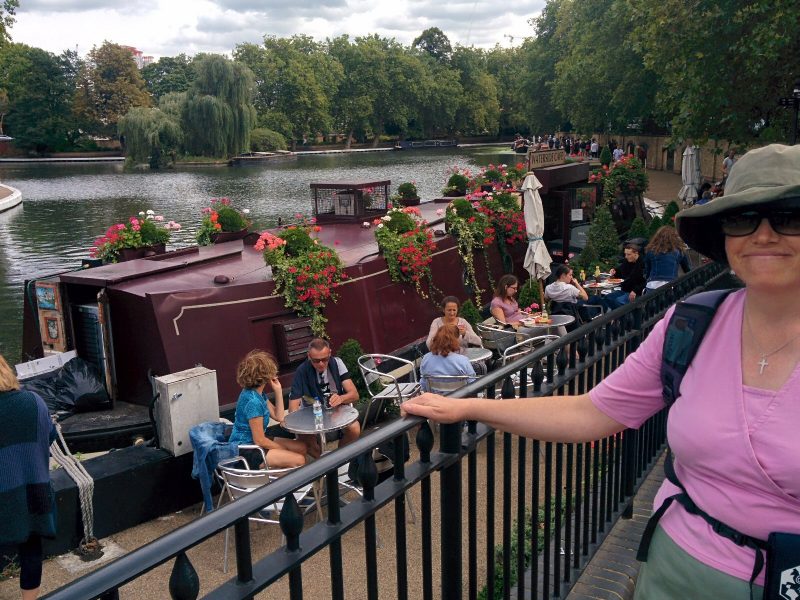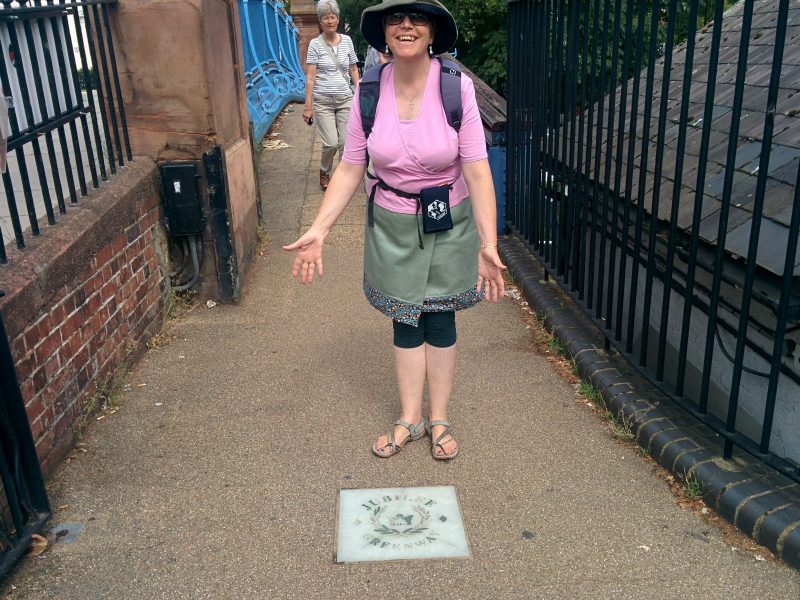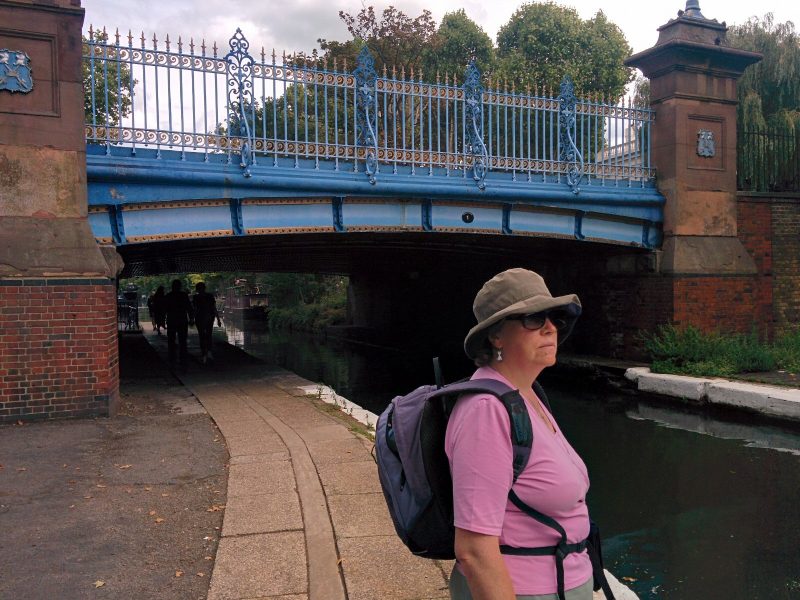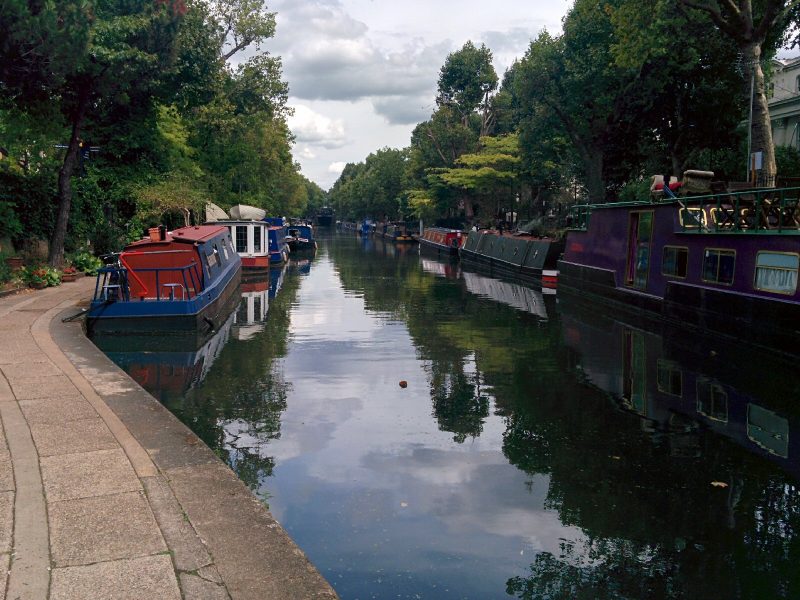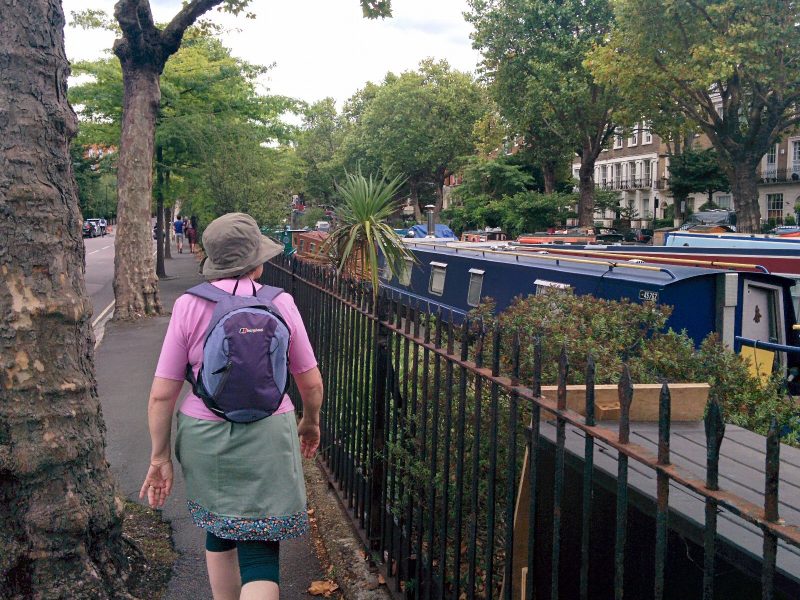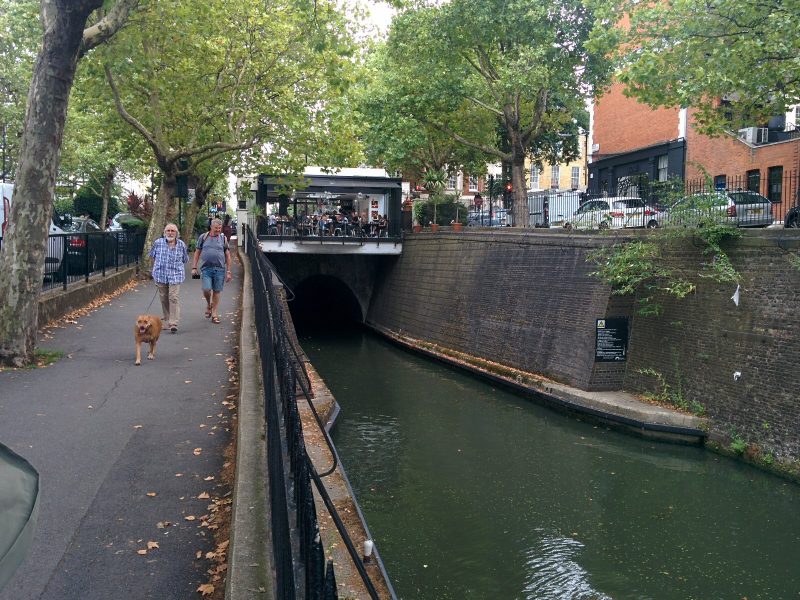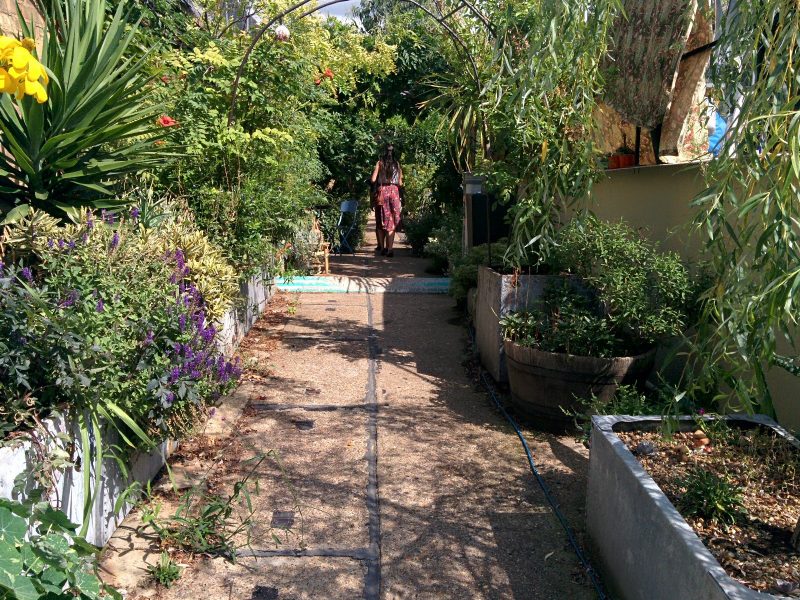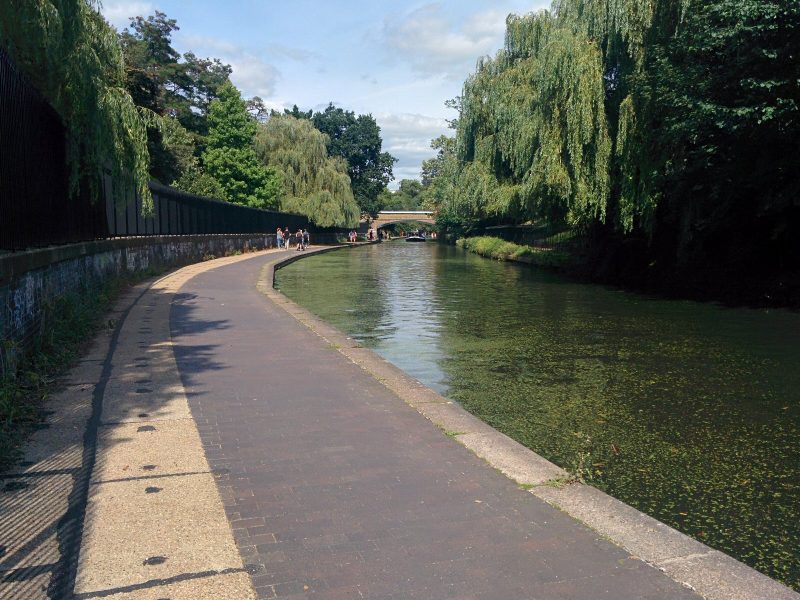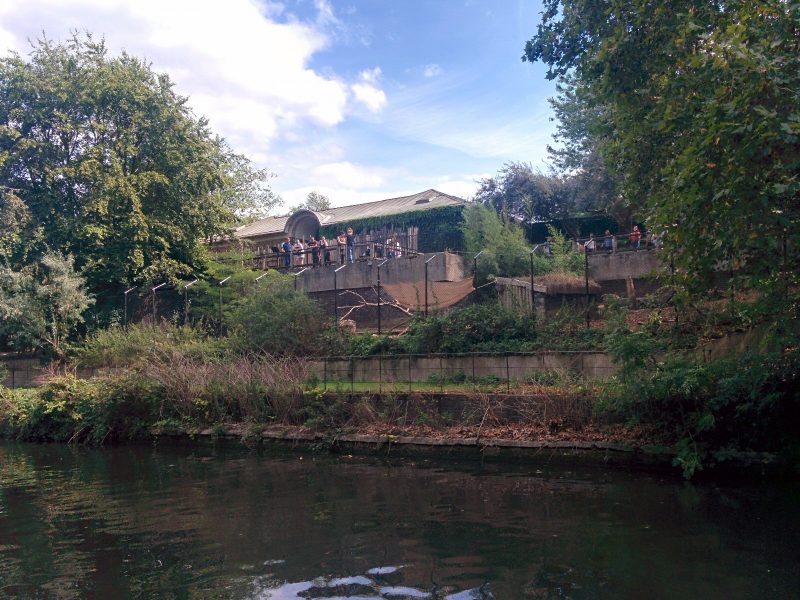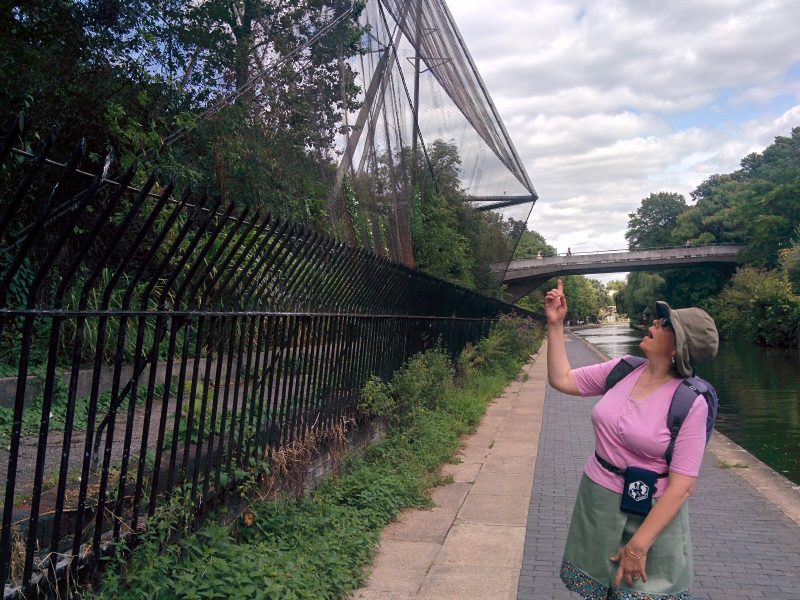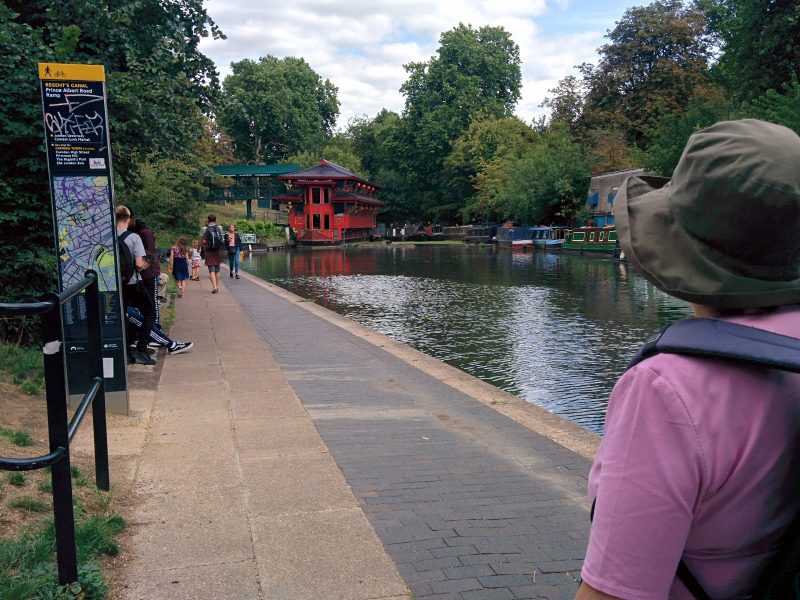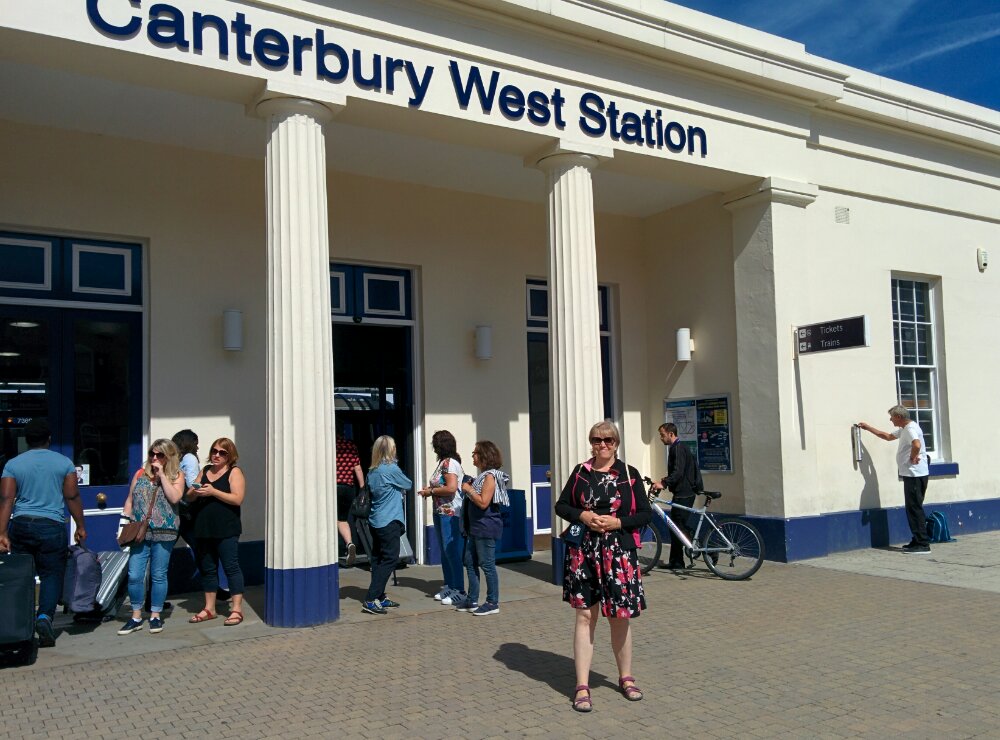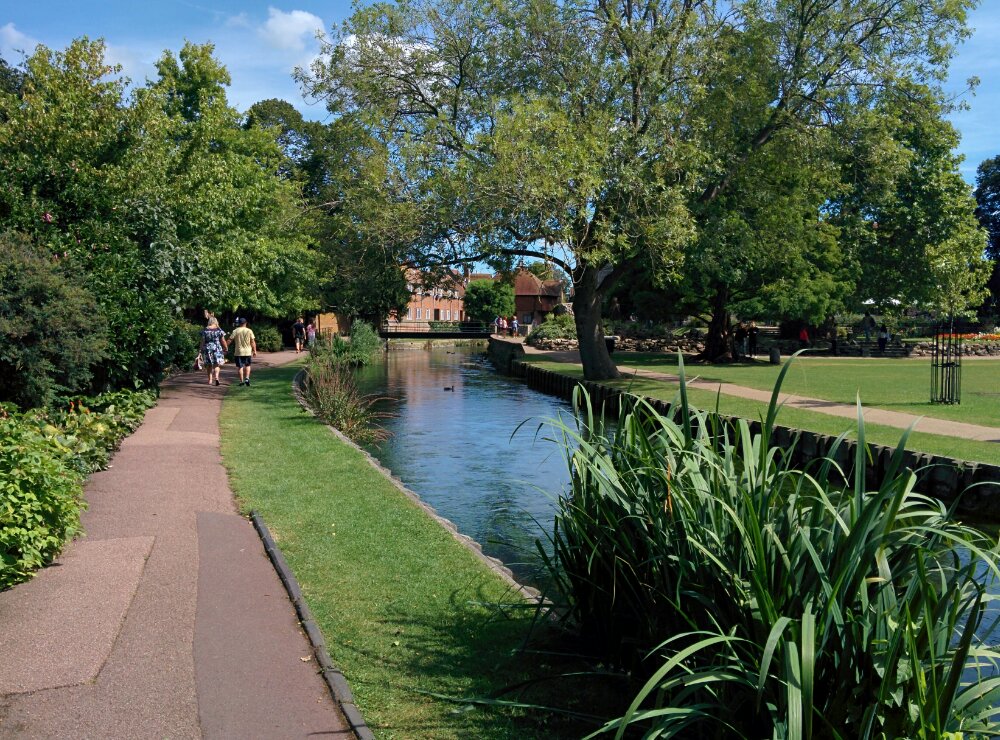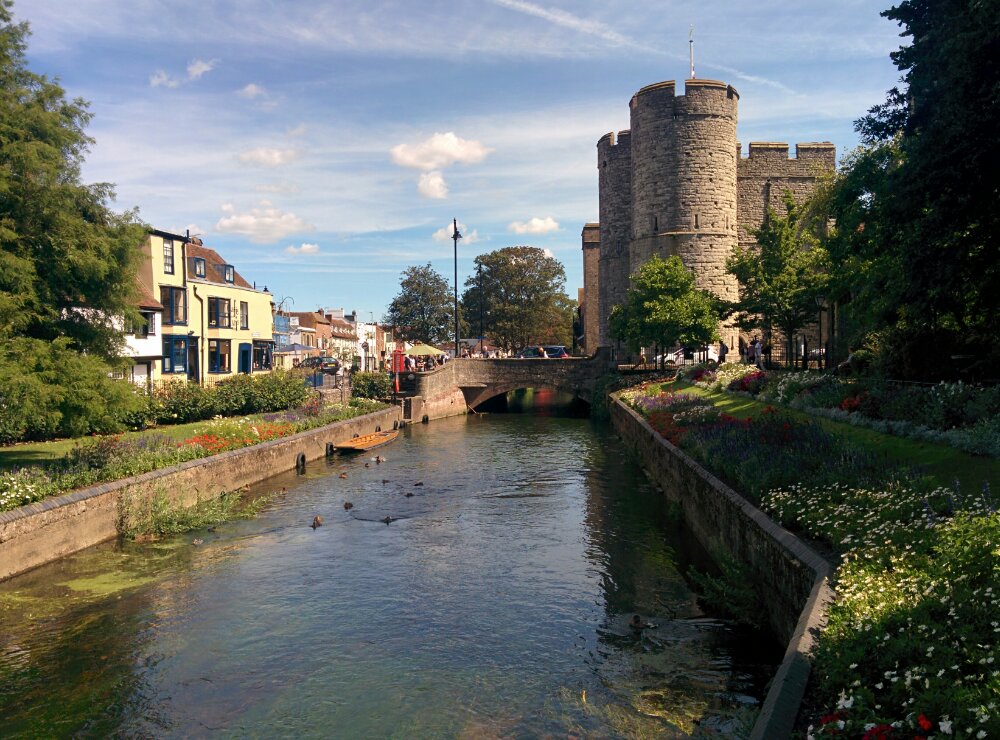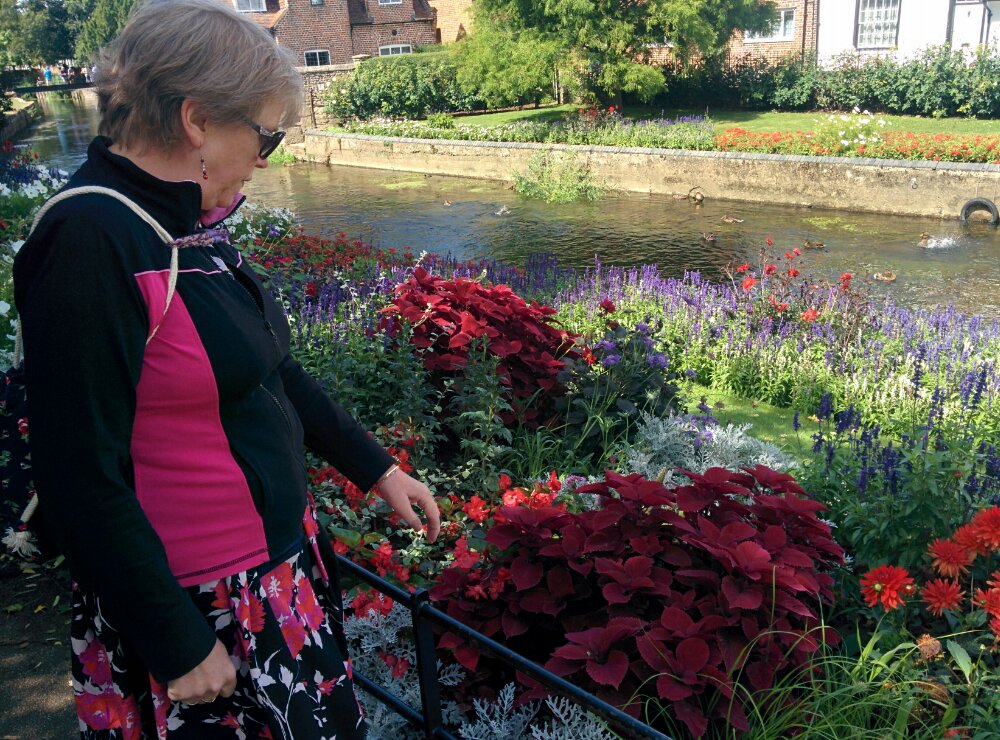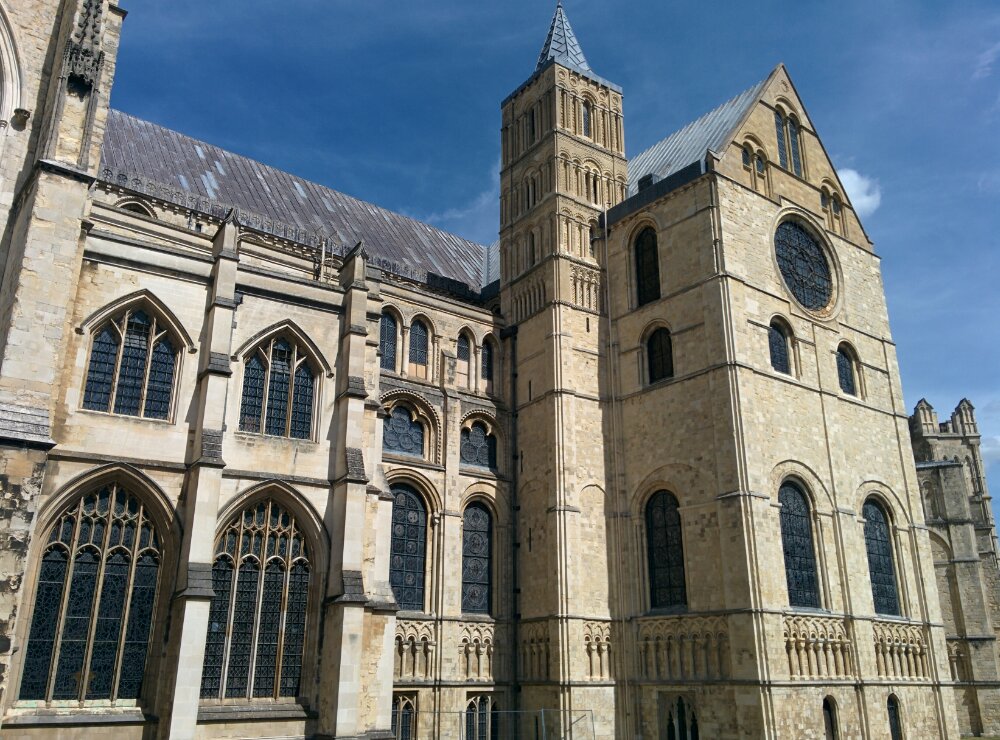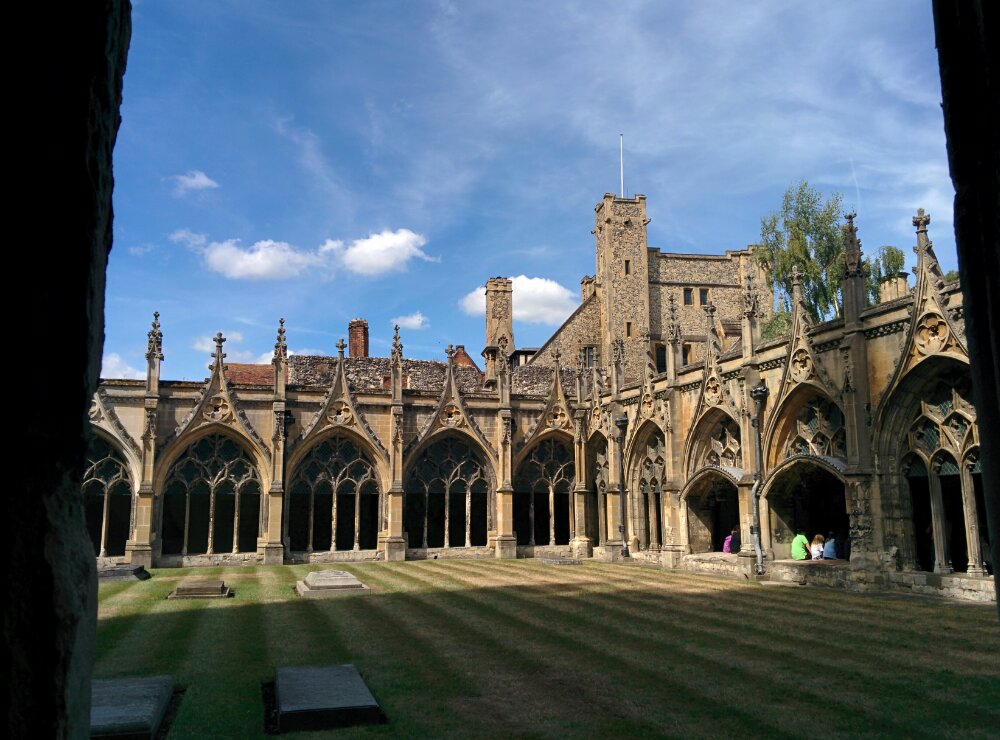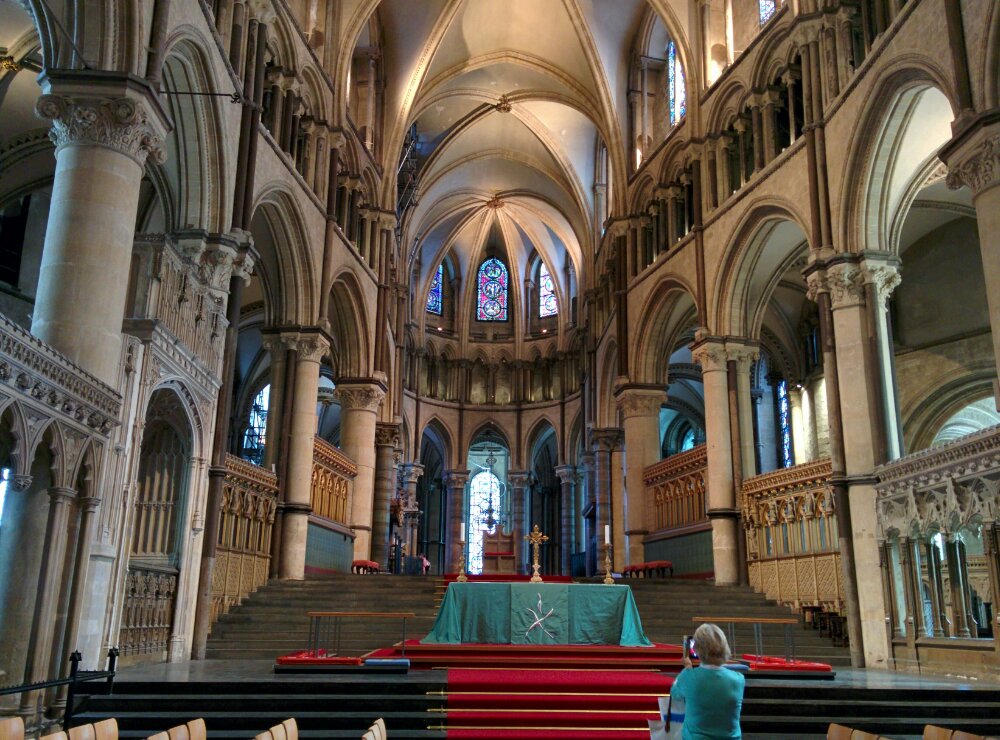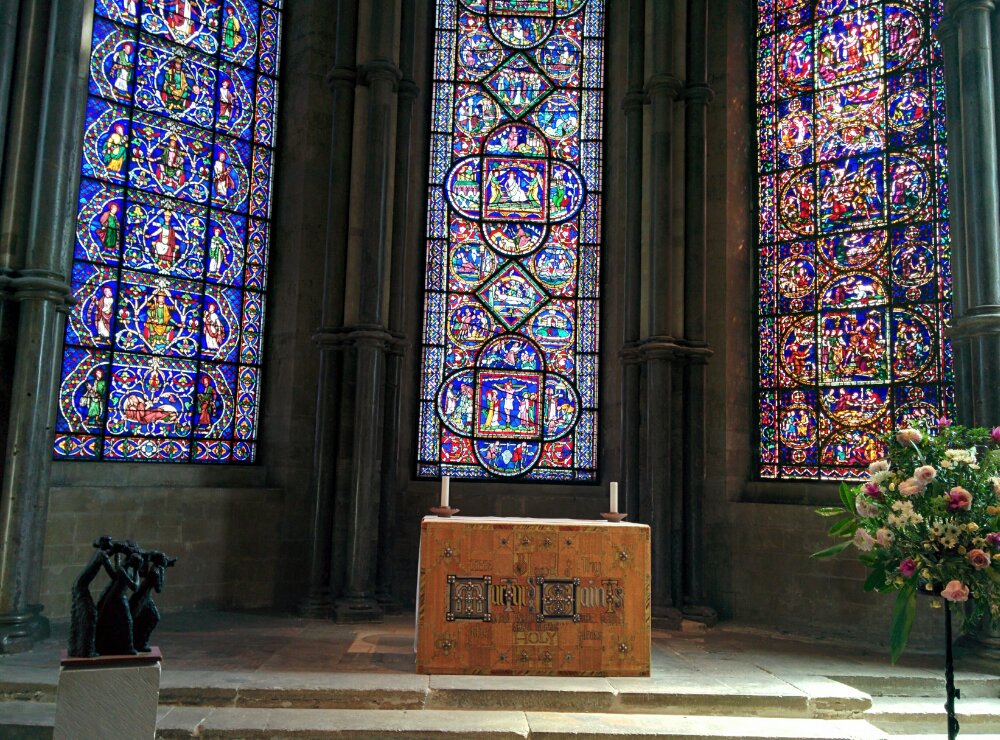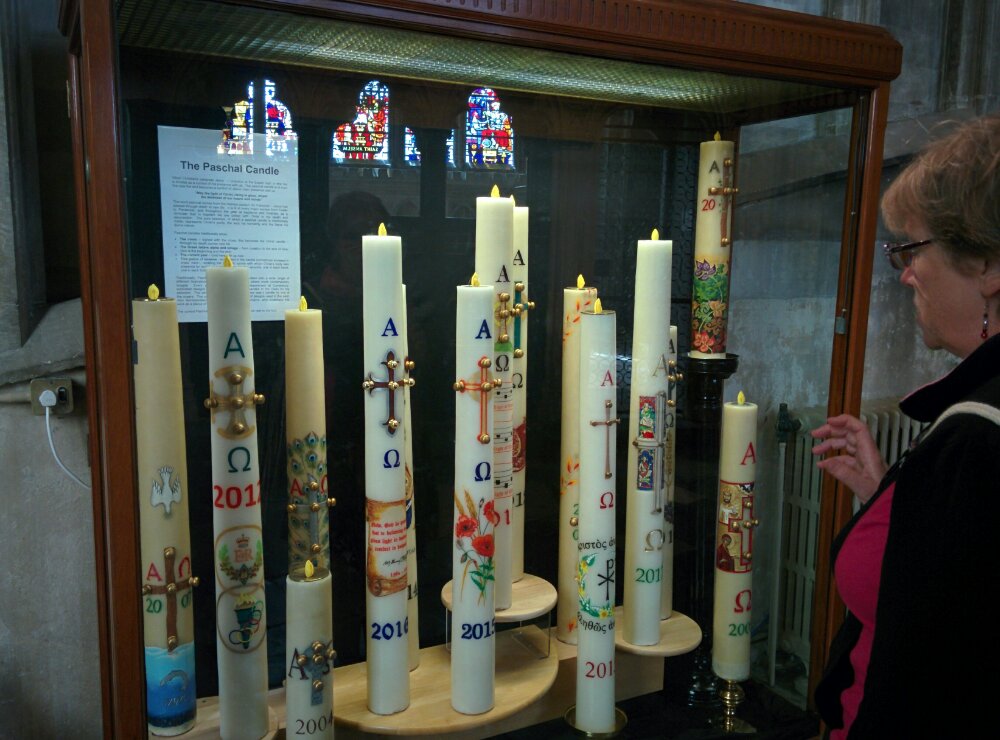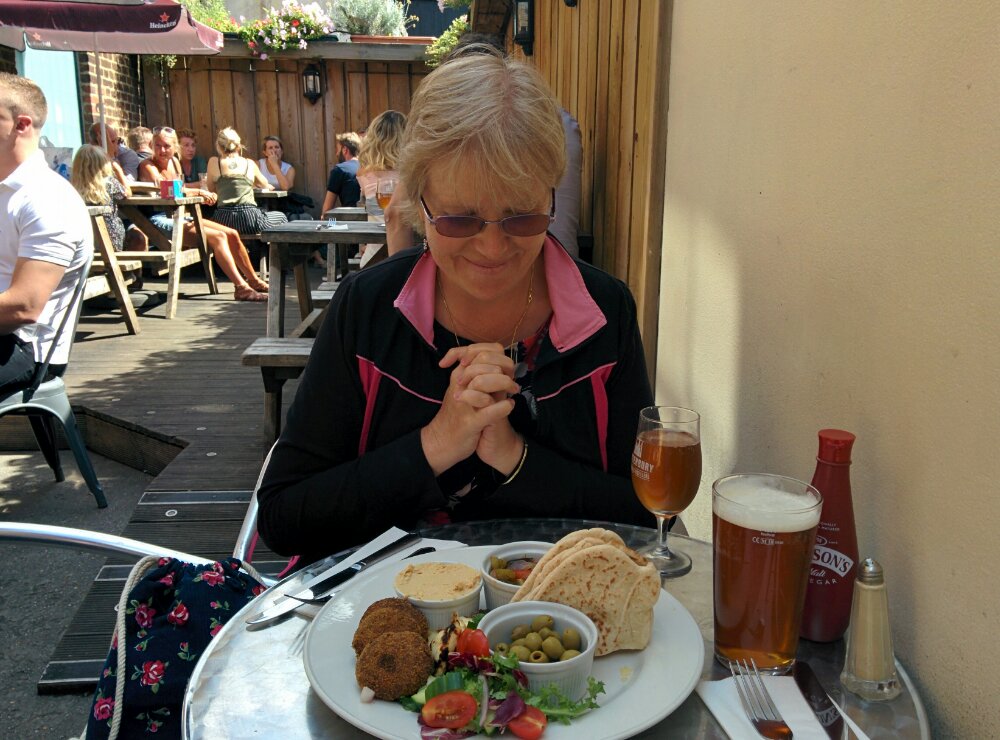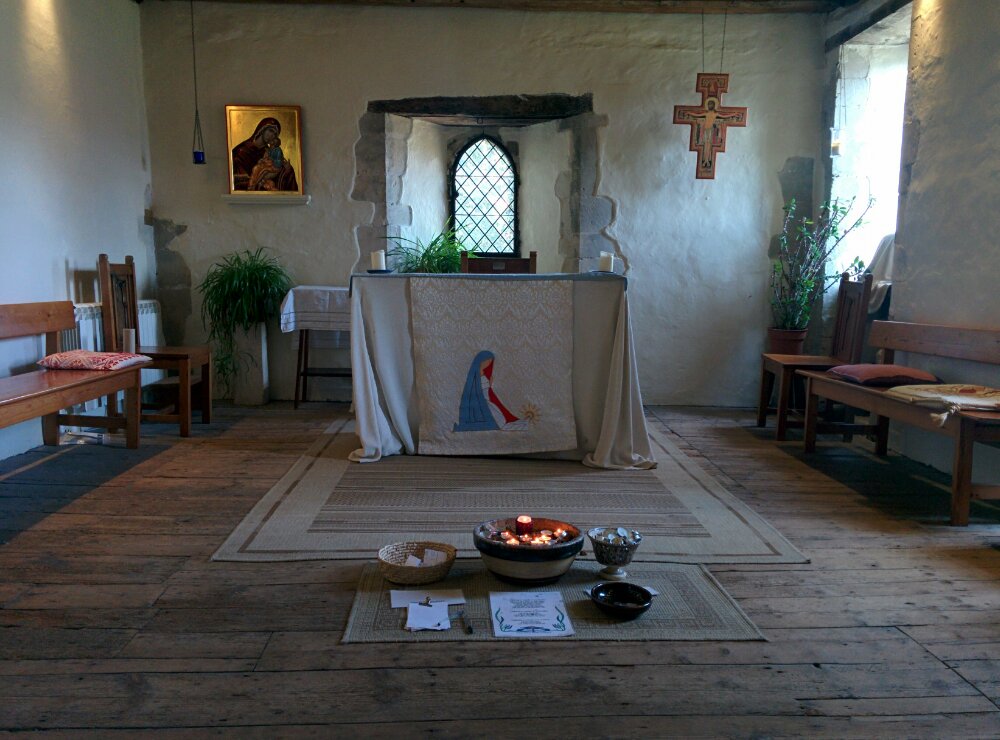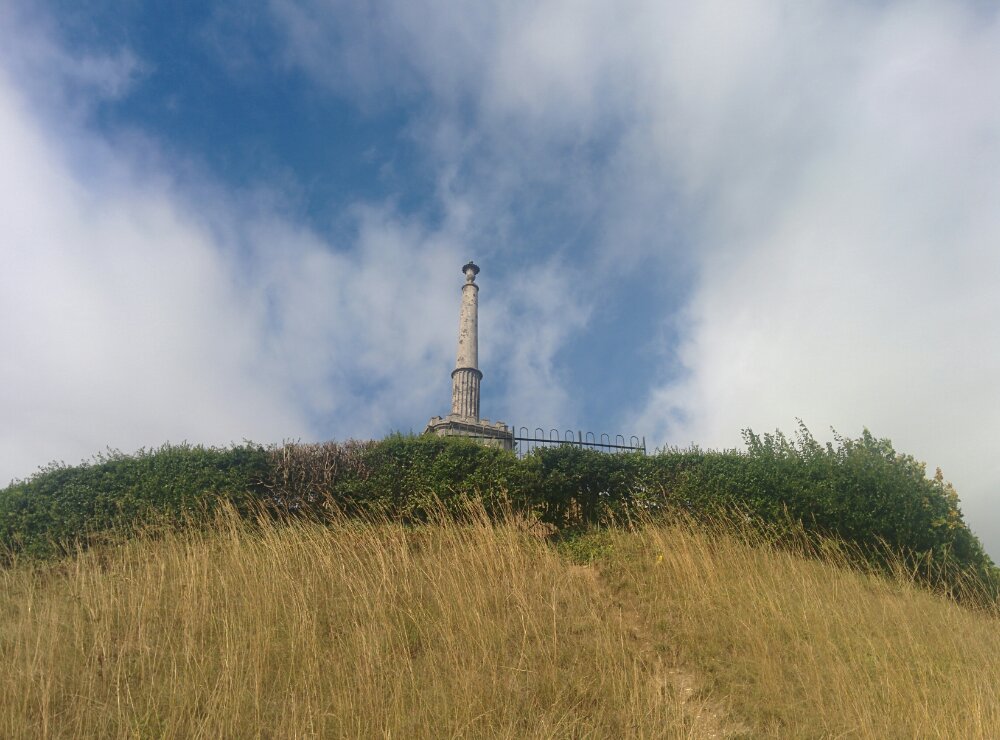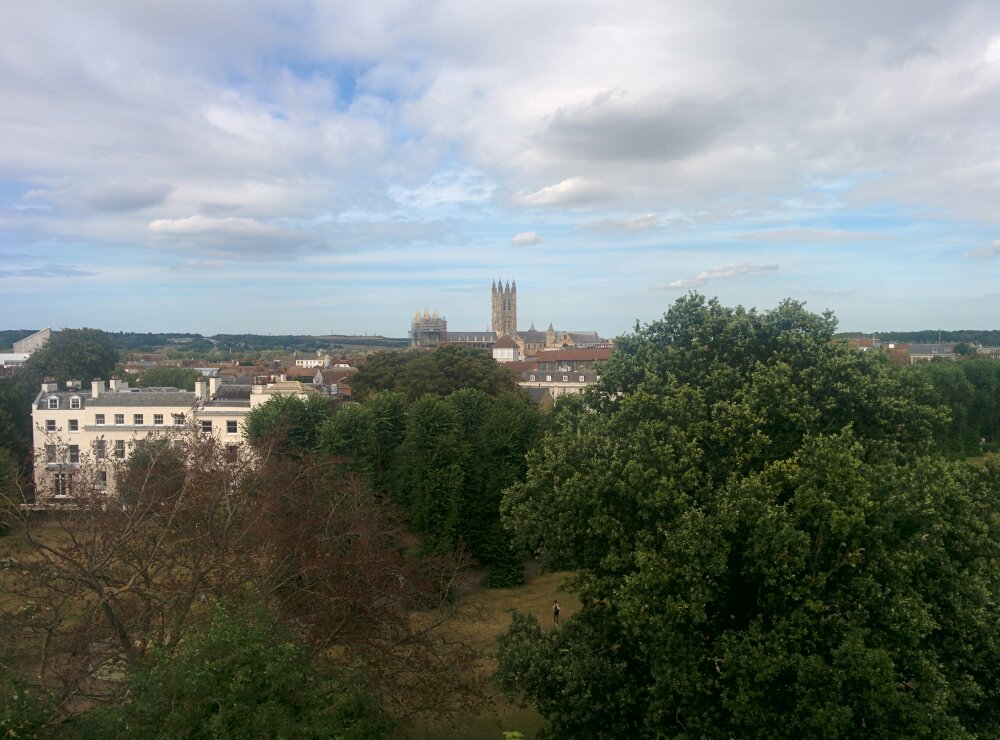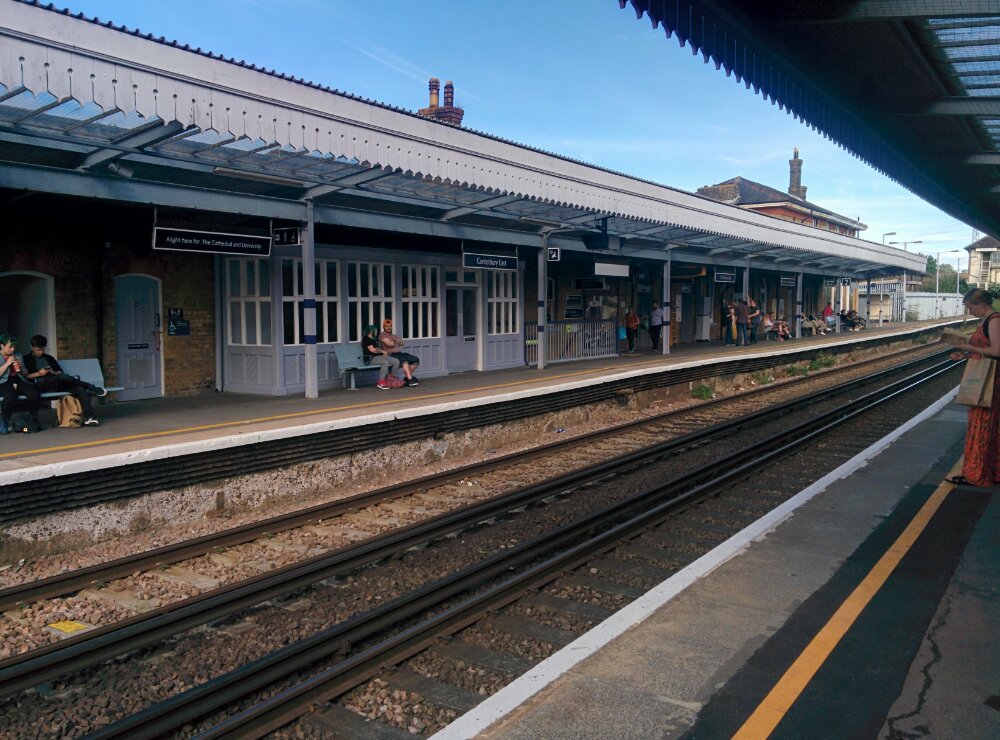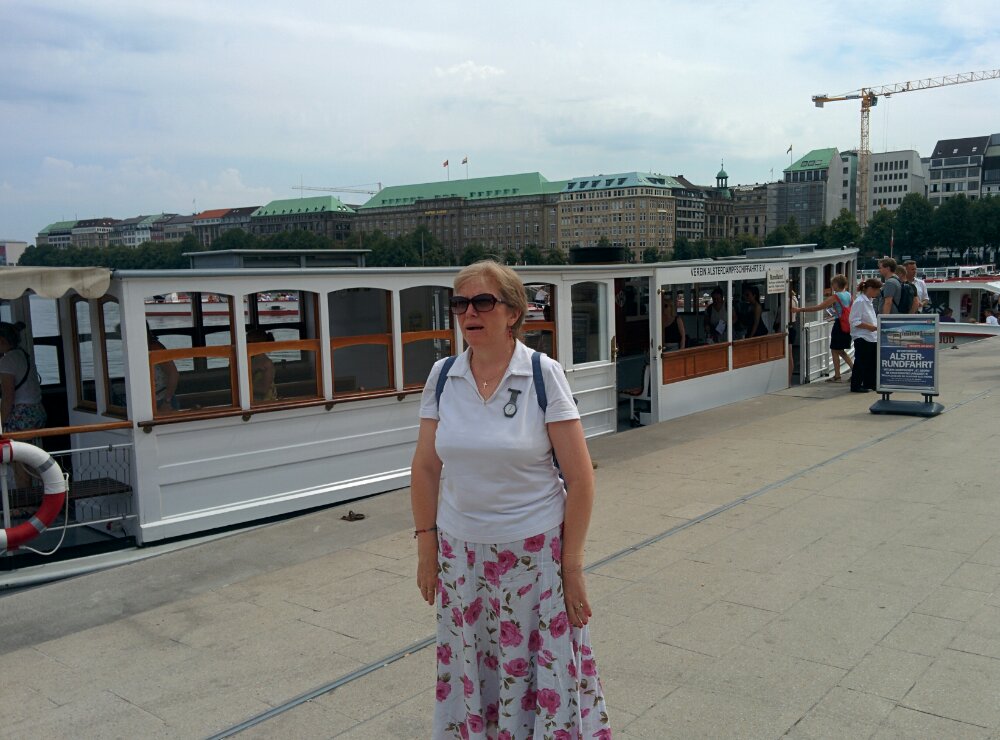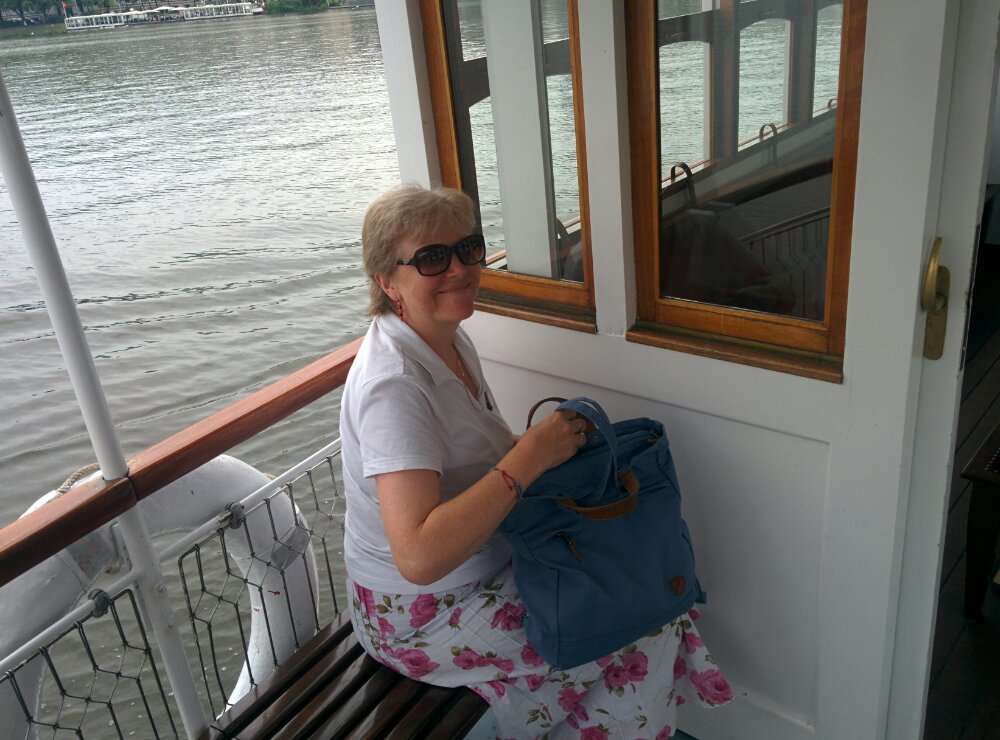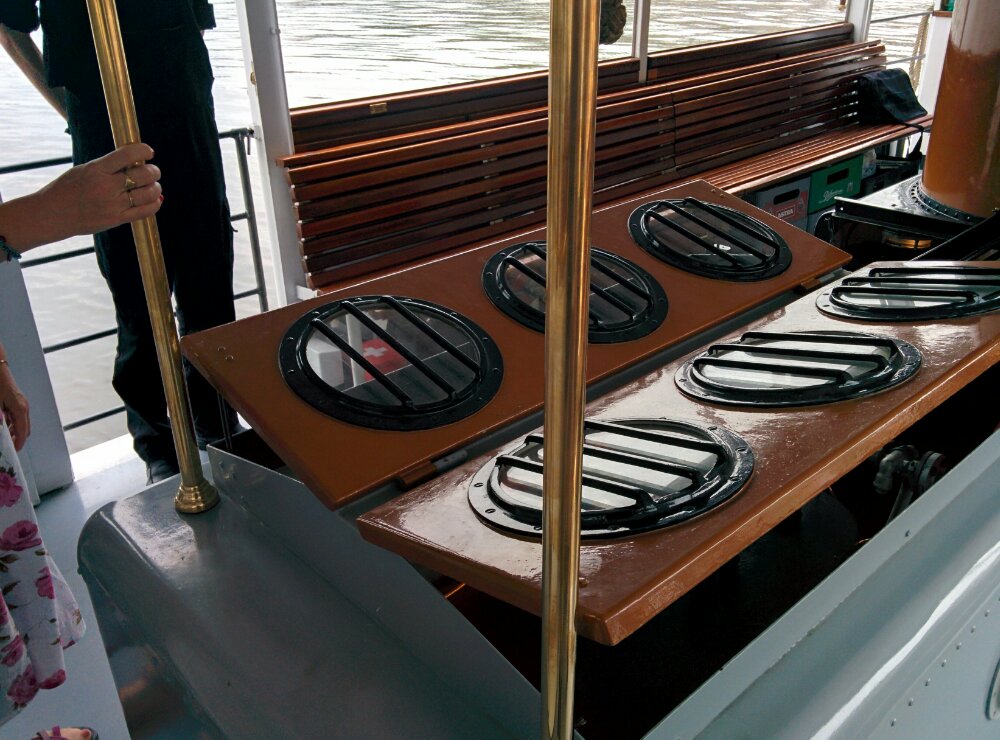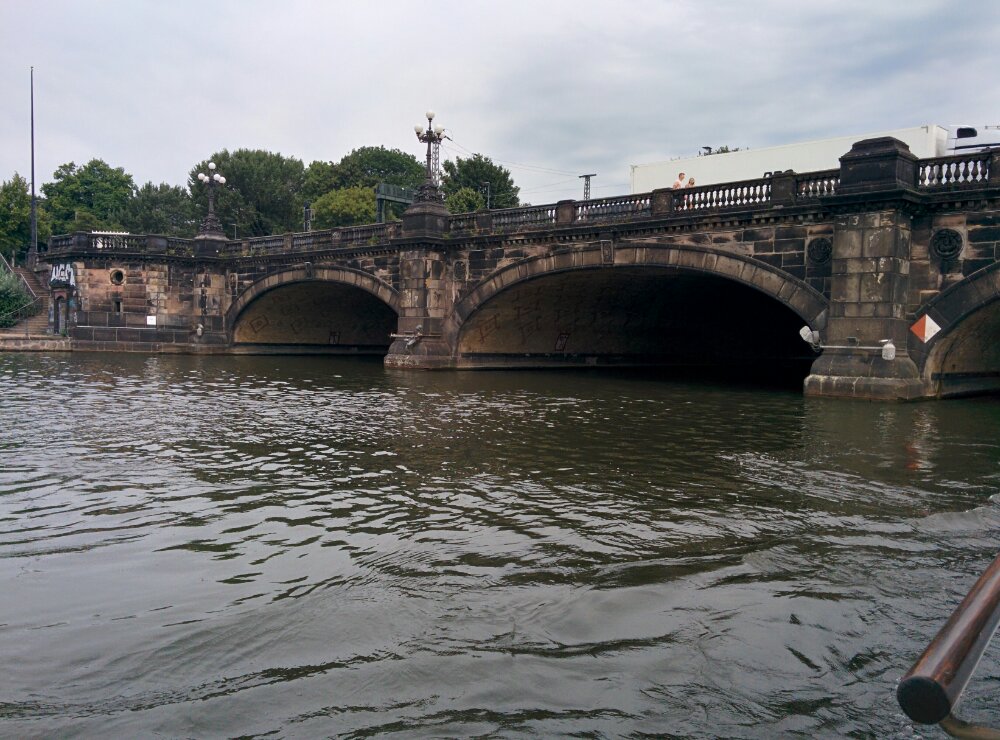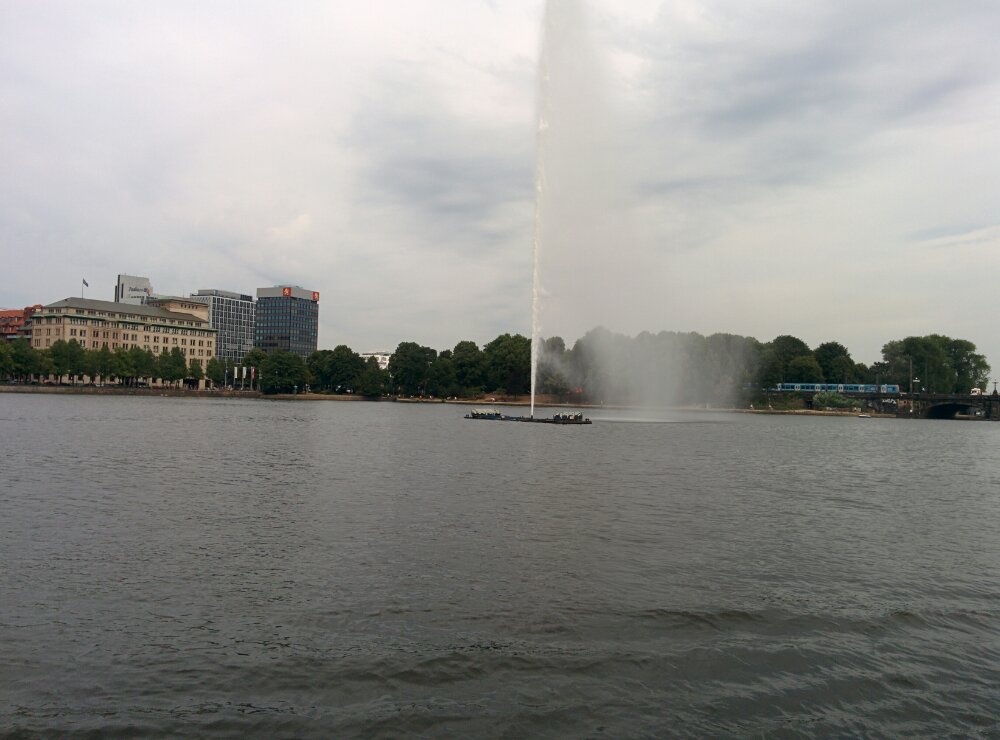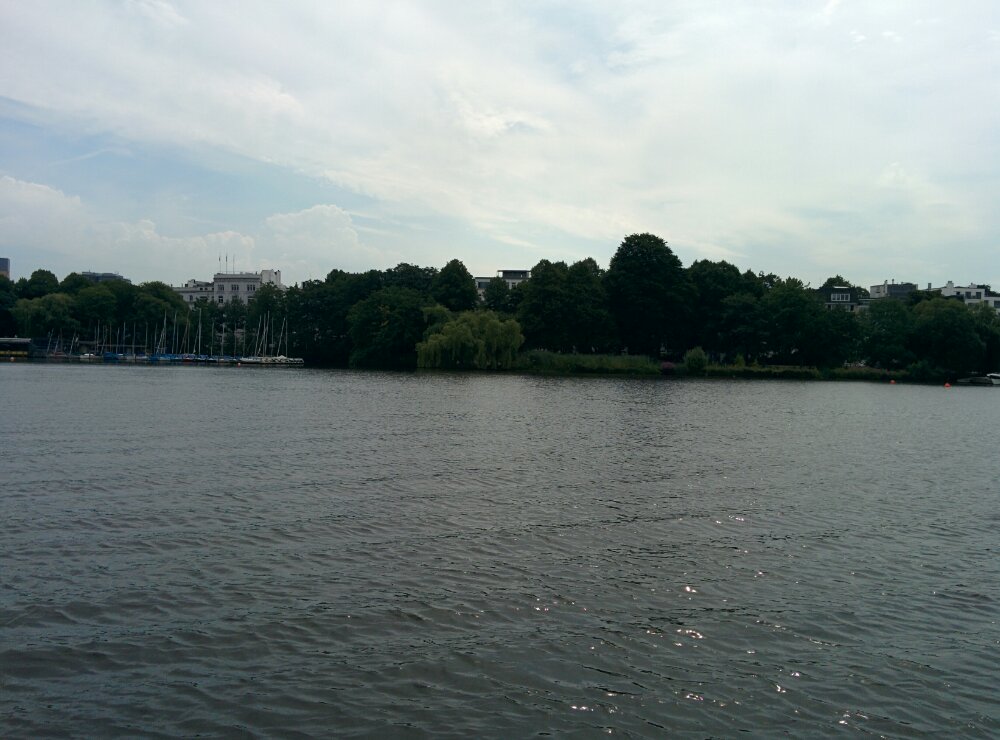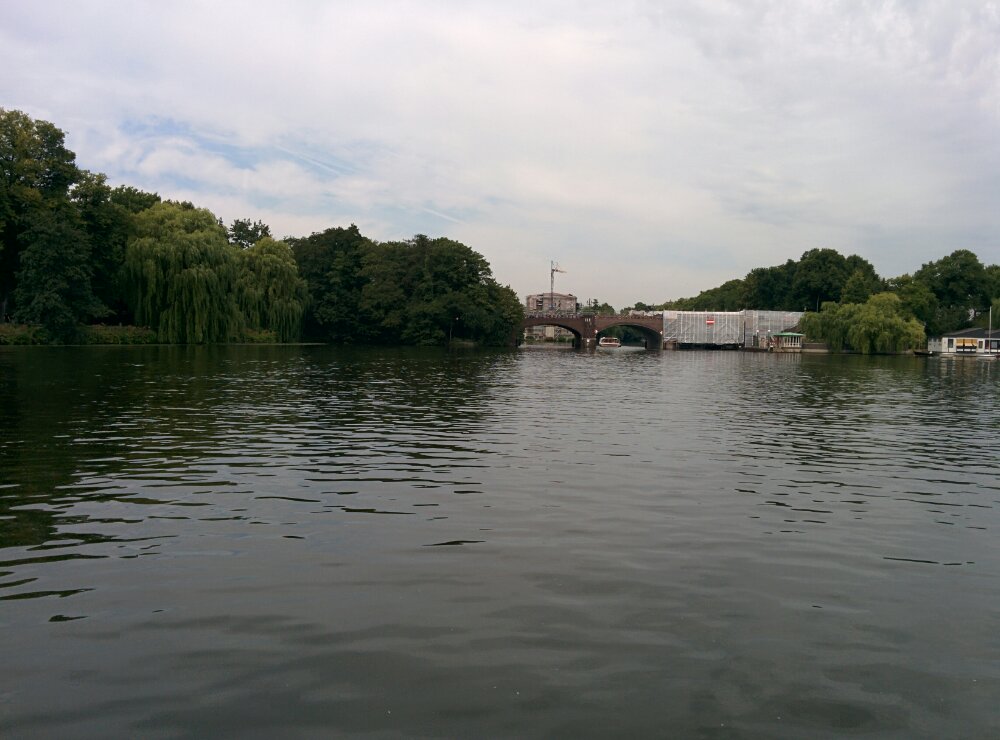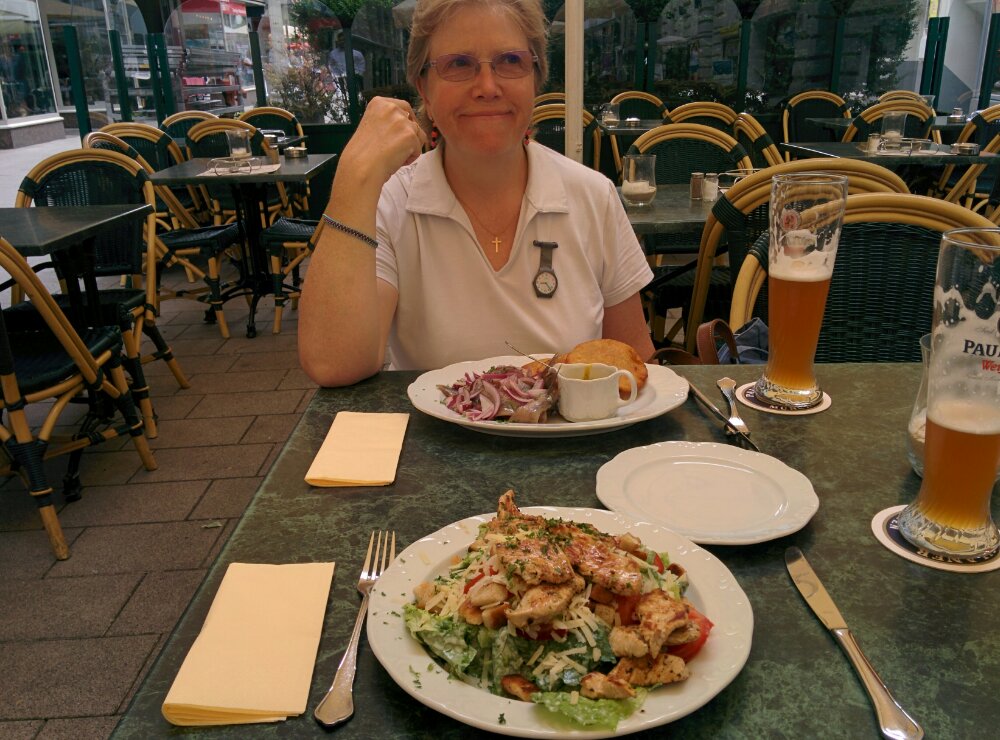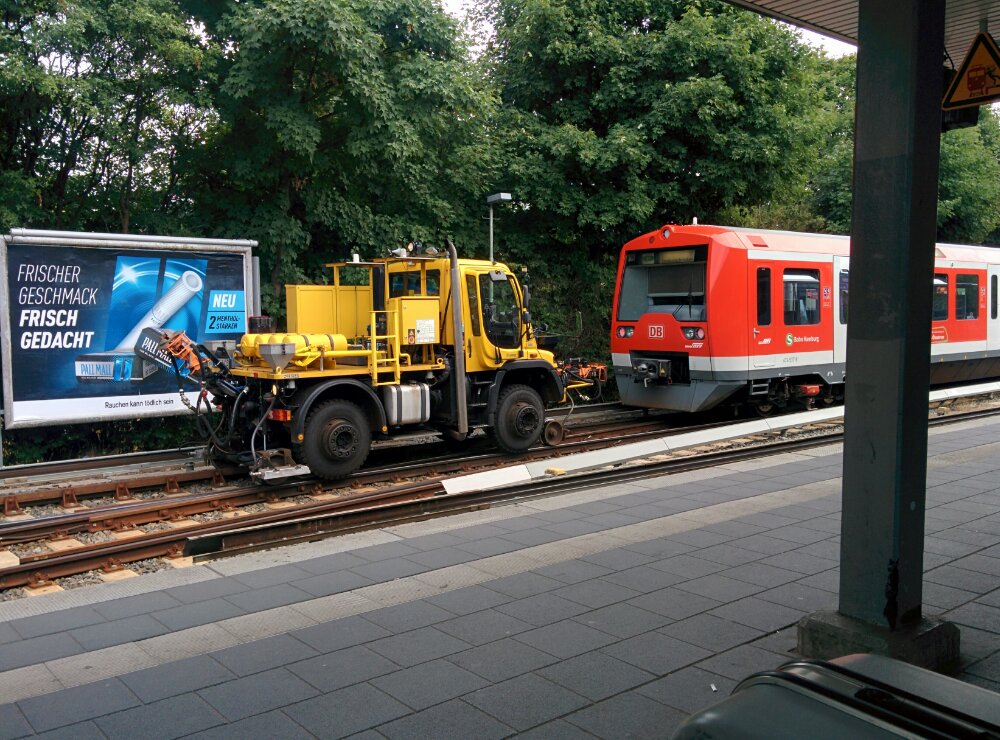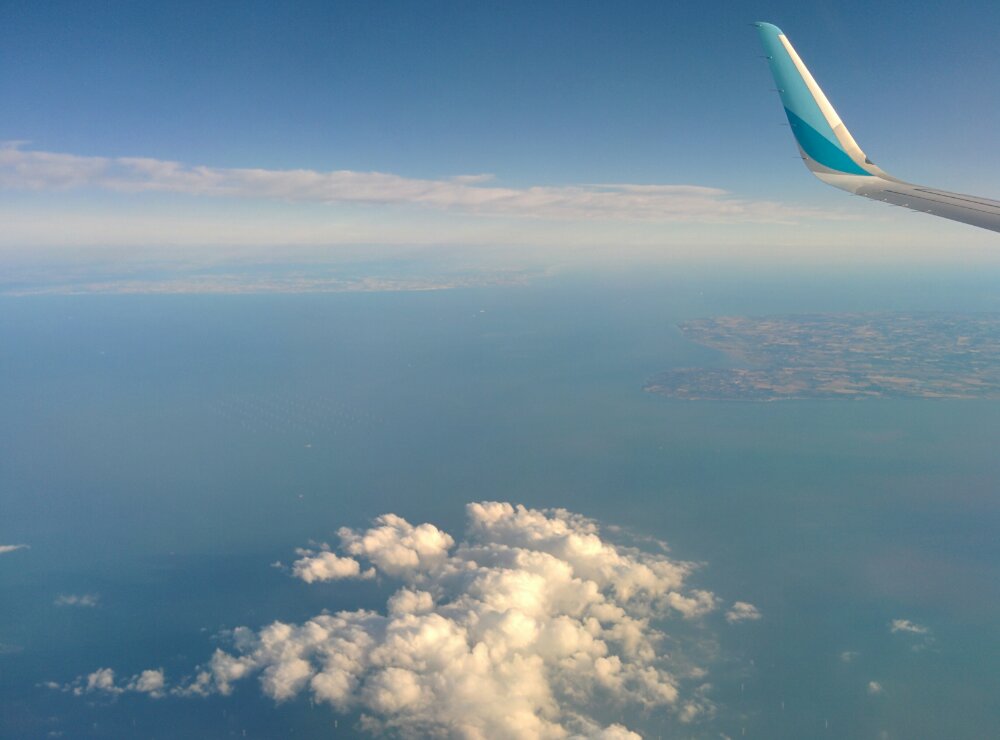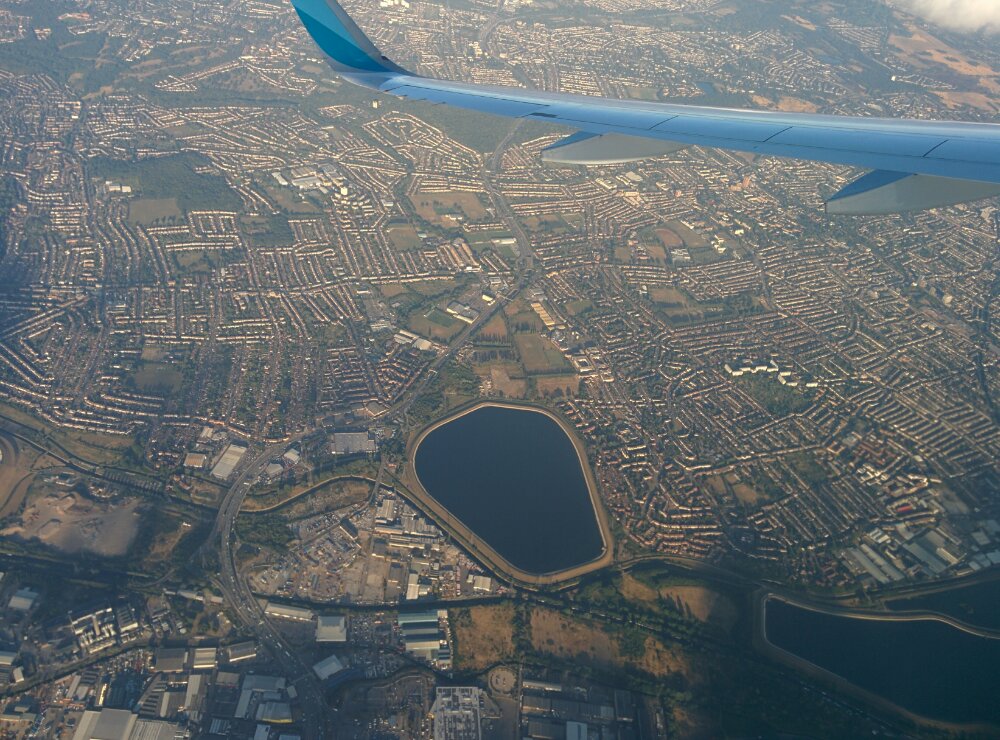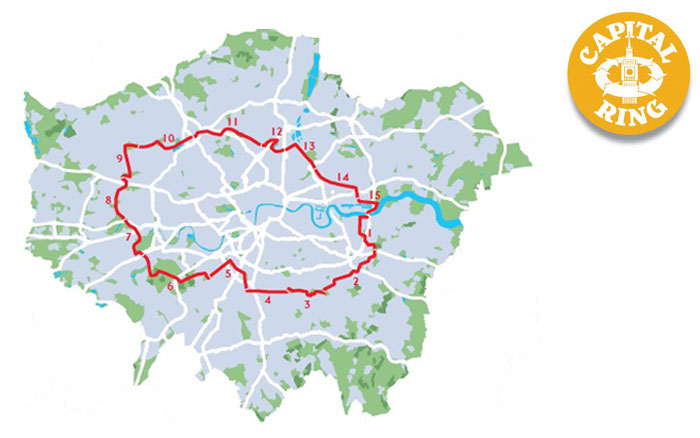
After the summer heat, it’s now a bit cooler, so time to continue my Capital Ring Walk.
It was a reasonable journey to Highgate Tube Station:
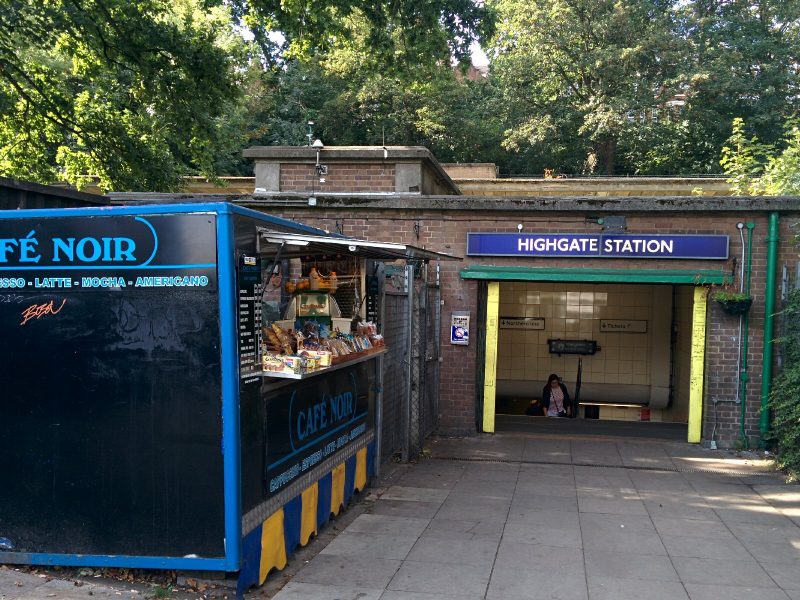
and a short walk through suburbia to the “Parkland Walk”, a quiet nature reserve created from a disused railway line: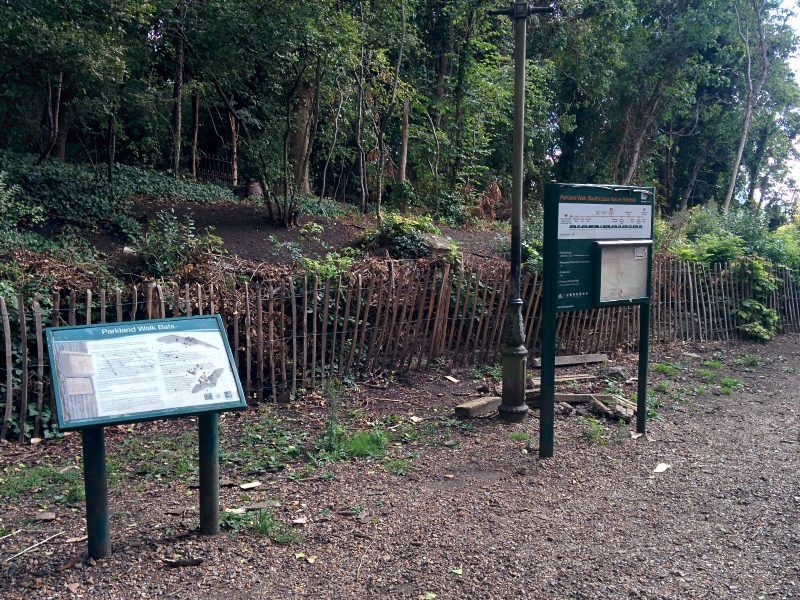
“The railway line, now occupied by the Parkland Walk, was opened by the Great Northern Railway in 1867. In the 1930s, as part of the ambitious New Works Programme, London Underground planned to electrify it and take it over as part of the Northern line. Much work was done, including the new platform buildings at Highgate station. The work was abandoned at the outbreak of the Second World War and the line was closed to passengers in 1954. It remained in use occasionally for freight until 1970 after which the tracks were lifted. It is now a haven for wildlife with about 250 species of plants and the shy muntjac deer living here.”
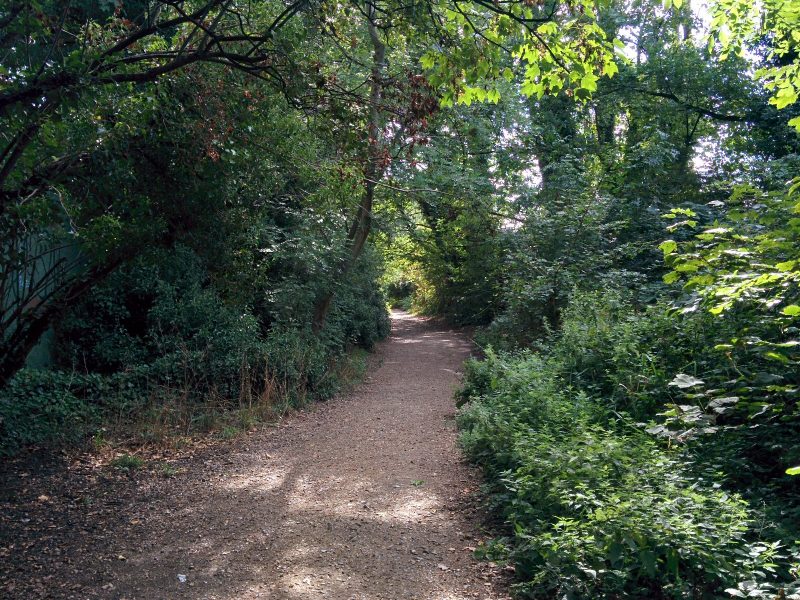
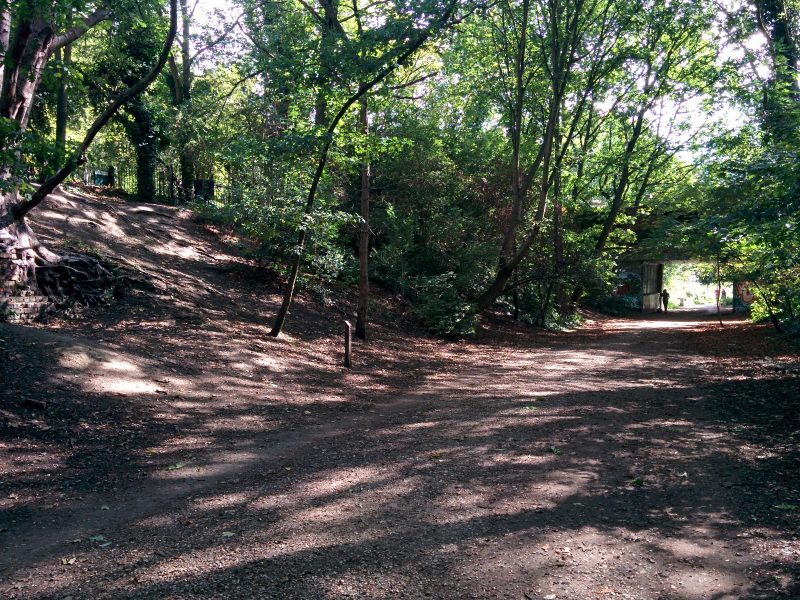
including a disused platform: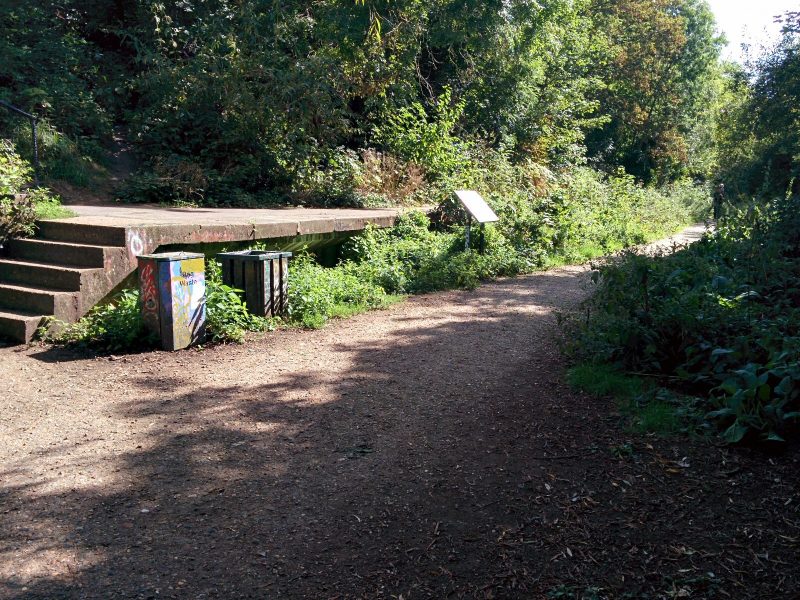
The route then crossed the East Coast Main Line and into Finsbury Park:
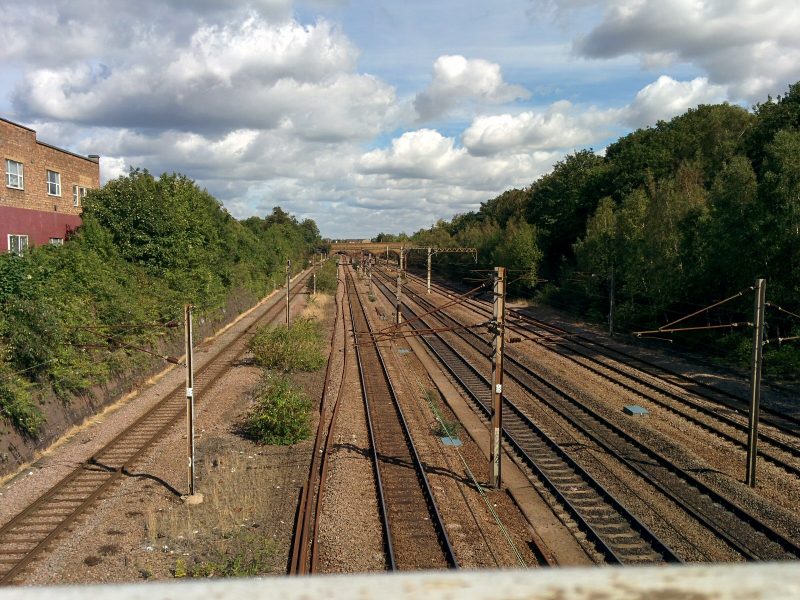
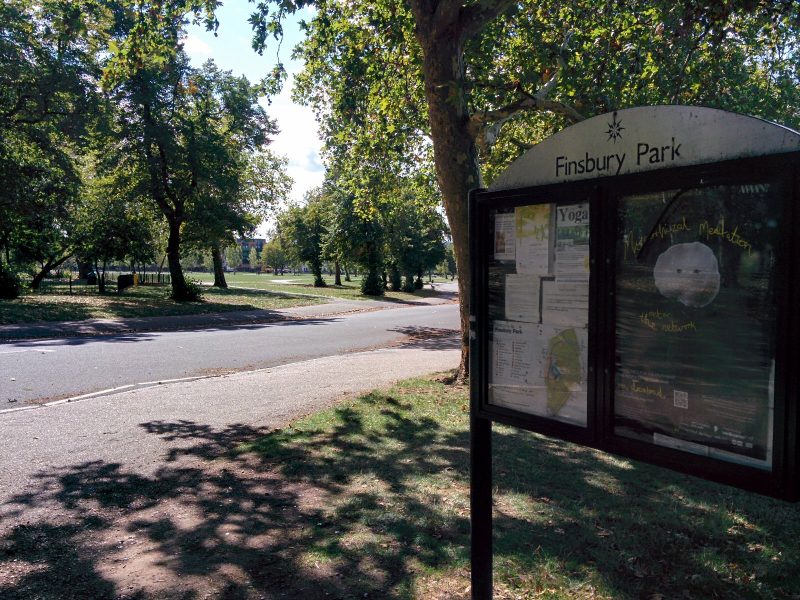
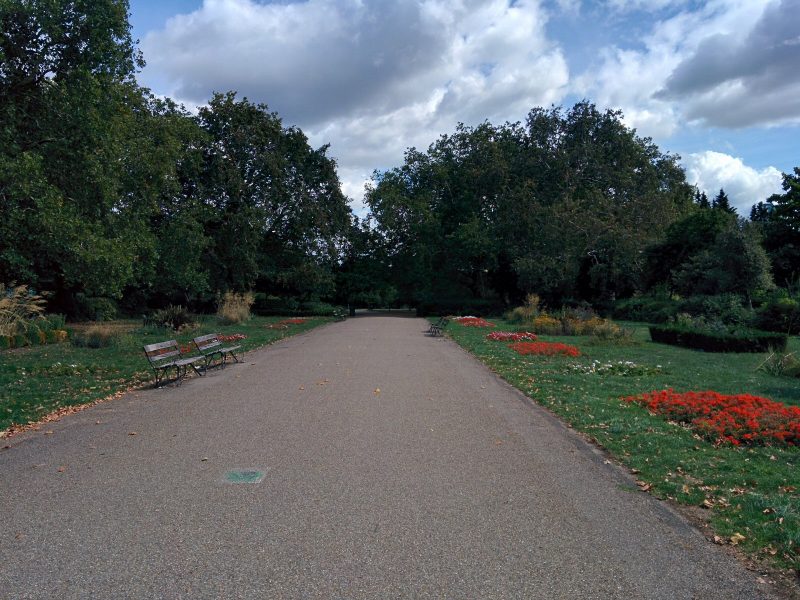
After crossing a busy road, the path then follows the “New River”:
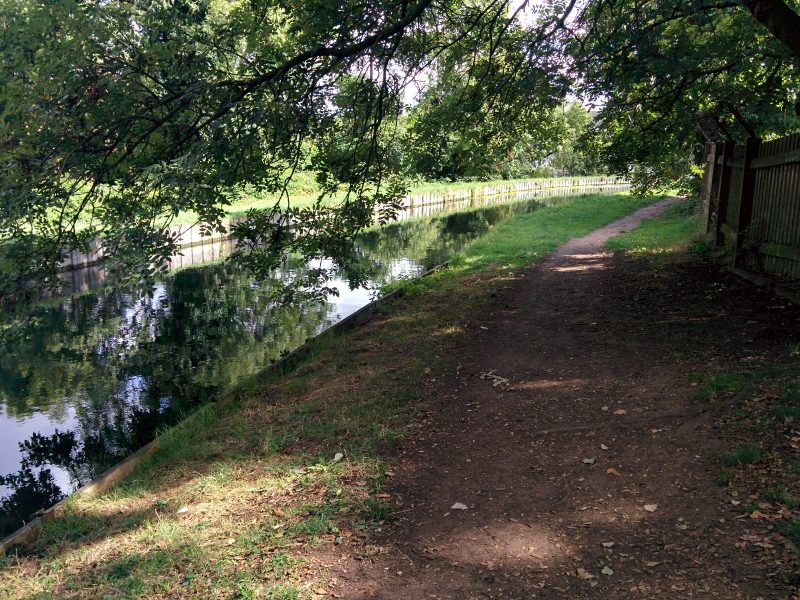
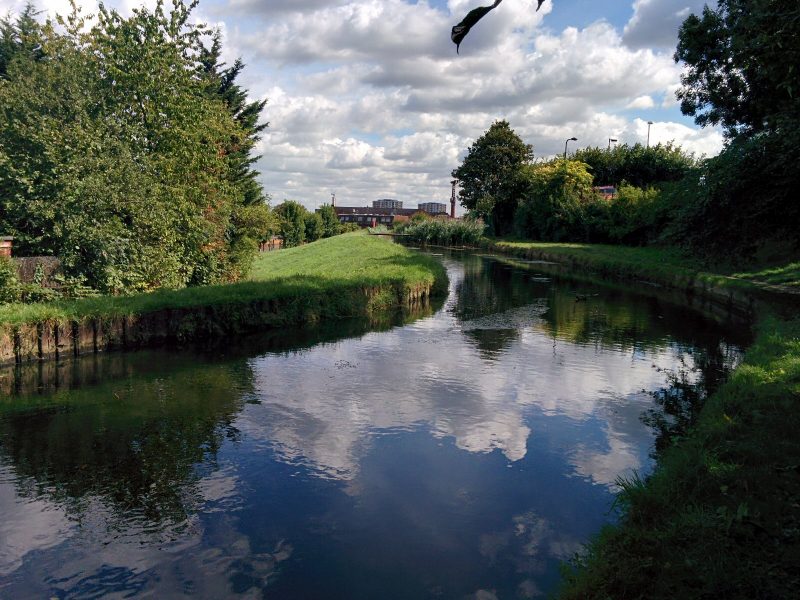
“The New River is spectacularly misnamed, as it is neither new nor a river – it’s nearly four hundred years old and an ingenious artificial watercourse. Built at a time when fresh water for London was in very short supply, it brought water 40 miles from springs in Hertfordshire to Islington. Following a very twisting route, the gradient dropped very gradually so that gravity pulled the water along; the canal dropped two inches every mile. There was considerable opposition from local landowners and it cost a fortune, but the entrepreneur and goldsmith, Sir Hugh Myddelton, pushed it through with support from King James. Today the ‘river’ still supplies water to the capital. You can follow the river on foot for most of the way from Hertford to Islington.”
The path then passes through the Woodberry Down Estate. “With some 50 blocks this forms the largest council housing estate in Britain.”
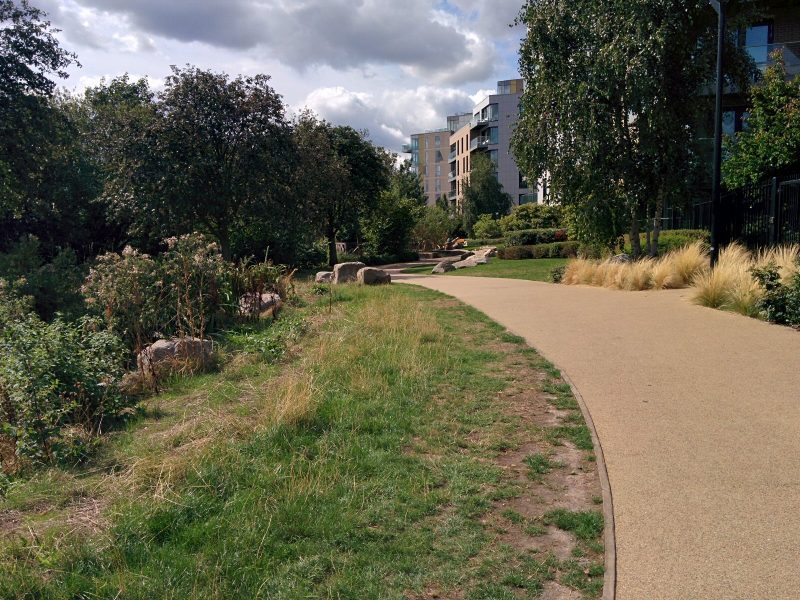
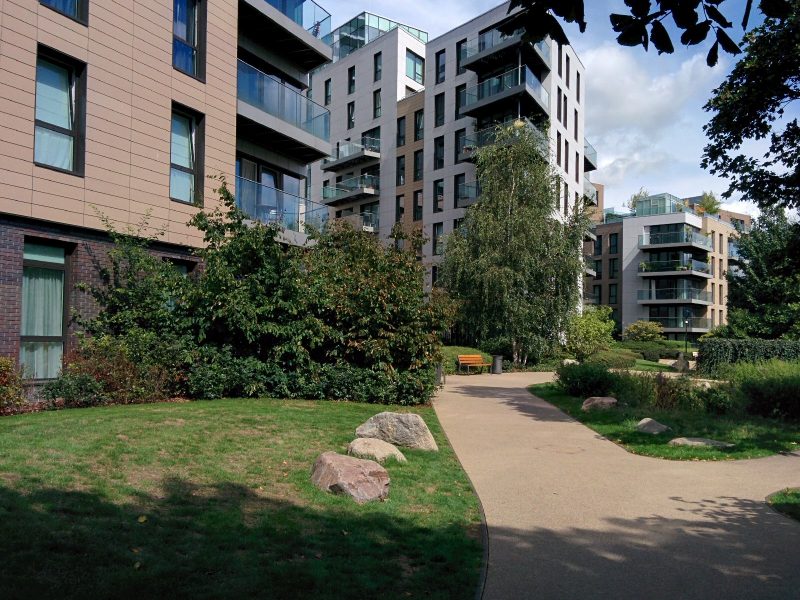
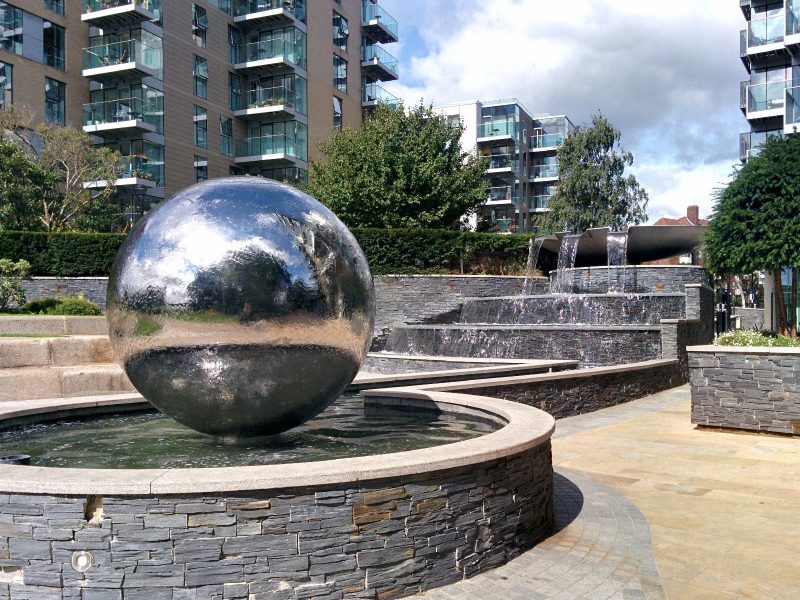
and follows past the imaginatively named East Reservoir and West Reservoir:
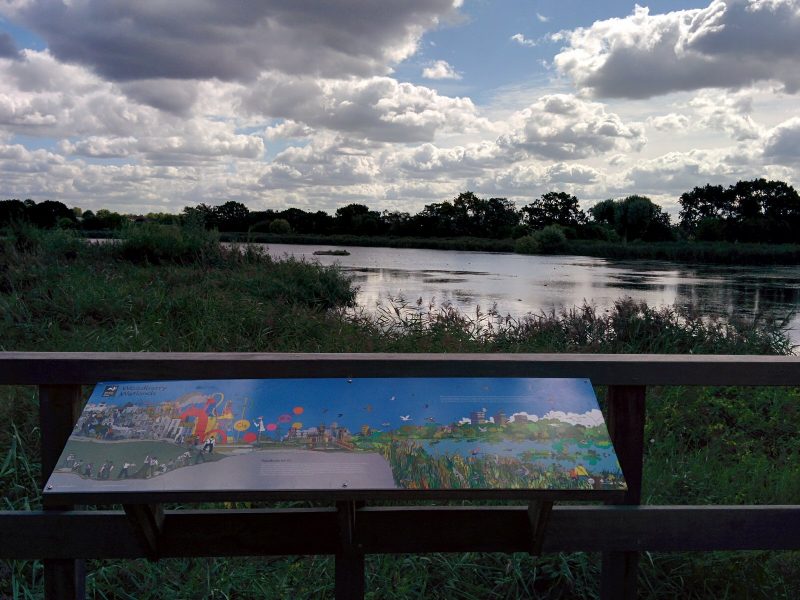
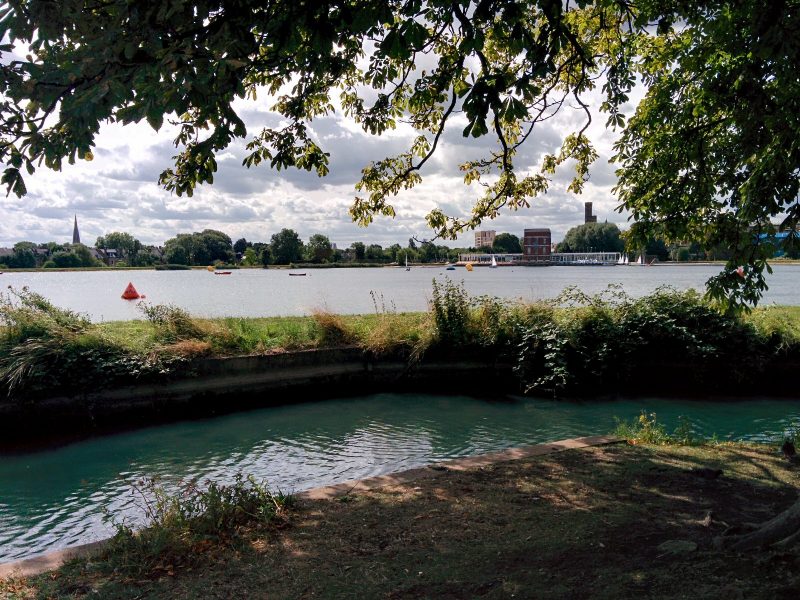
All too soon, the route crosses the New River and into the streets of Finsbury Park:
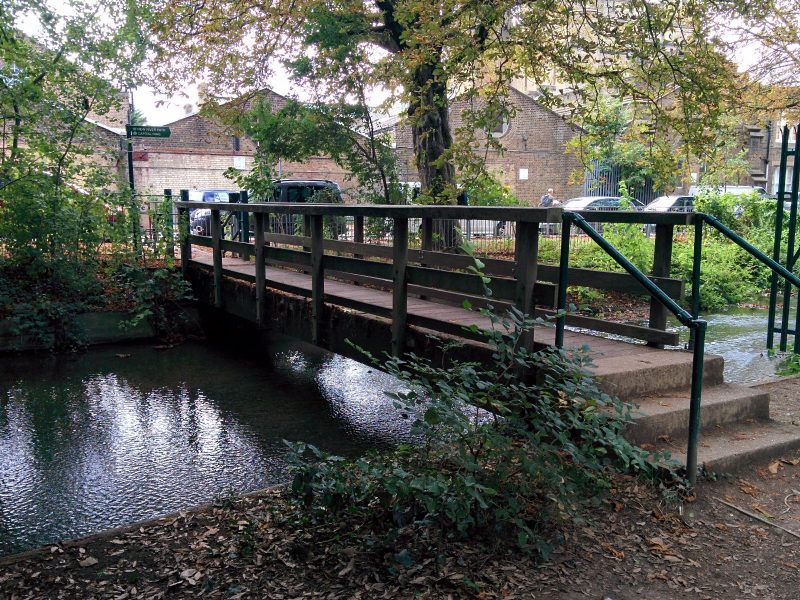
Next is Clissold Park, with some attractive planting, lake and cafe:
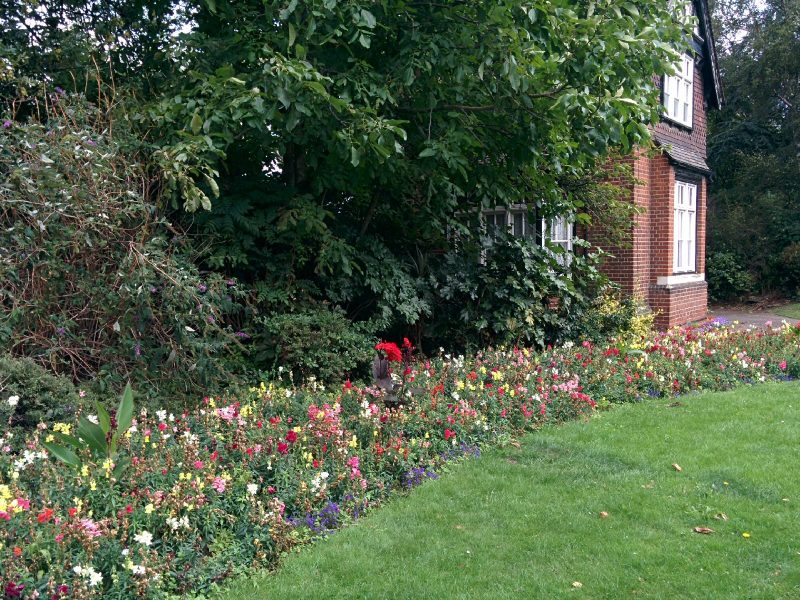
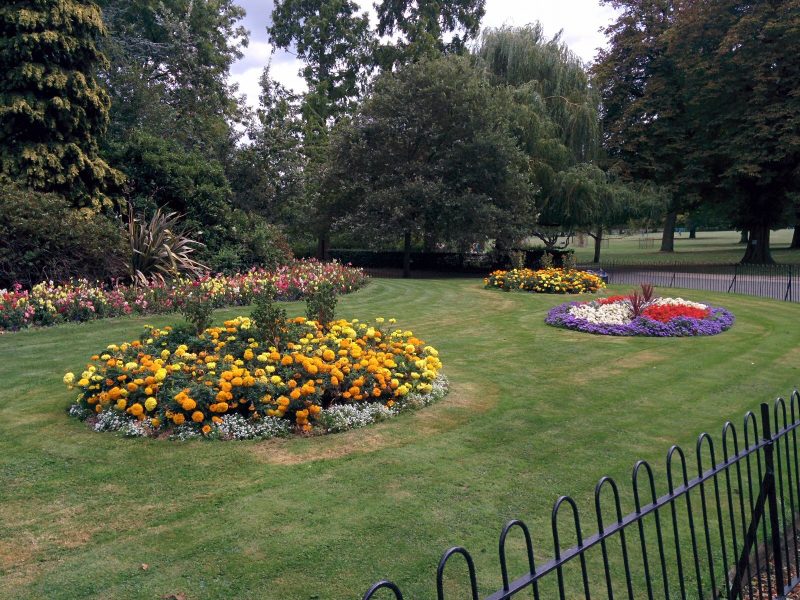
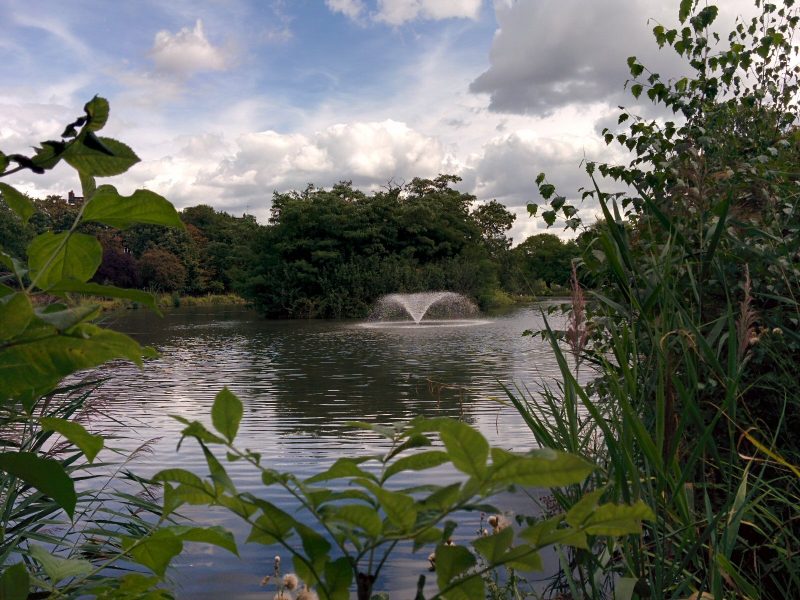

Finally for this section, the route goes through Abney Park Cemetery:

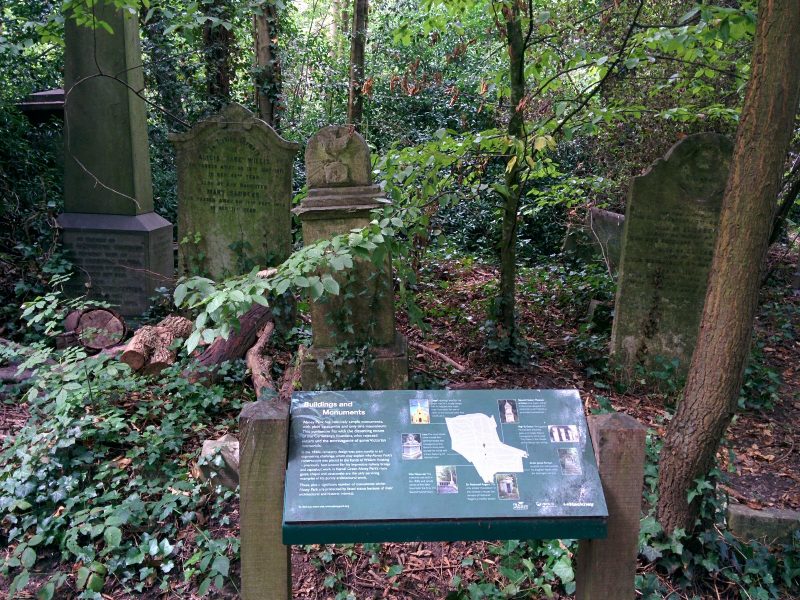
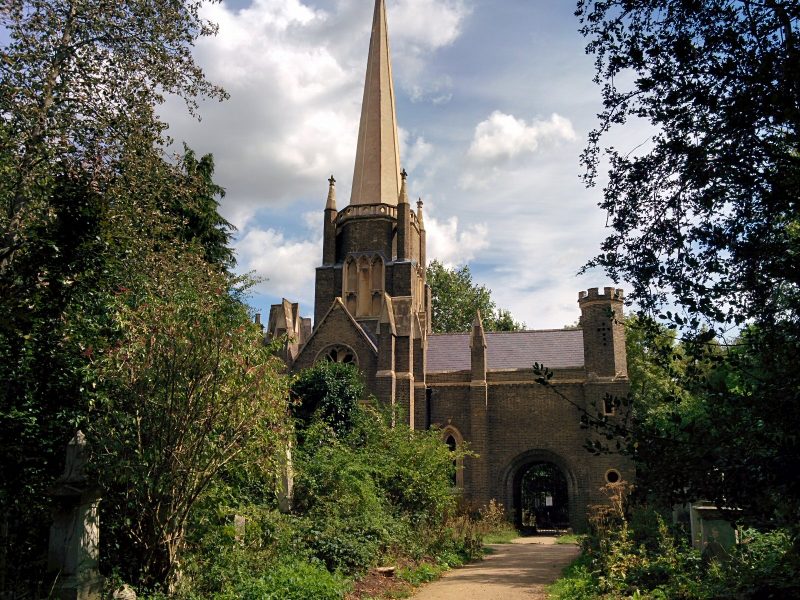
“Abney Park Cemetery was the first European Garden cemetery – that is, with reception buildings, chapel and landscaping – to take a non-denominational approach with no separation between the graves of different religions; consequently there was no consecration of any part, except where individuals chose it for their plot.
It’s now a very evocative site and nature reserve where over 300,000 graves have been laid since it opened in 1840; many notable people are buried here.”
Section 13
This starts with more road walking through Stoke Newington:
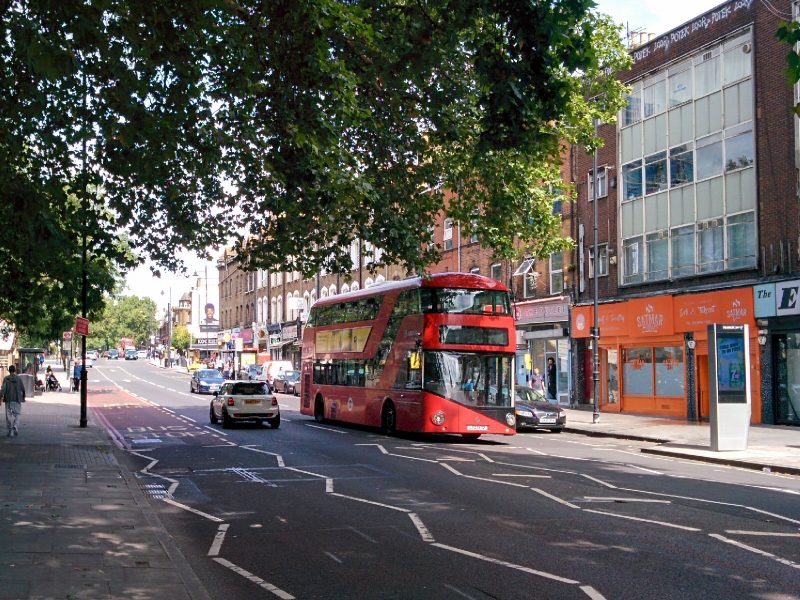
Then into Springfield Park:
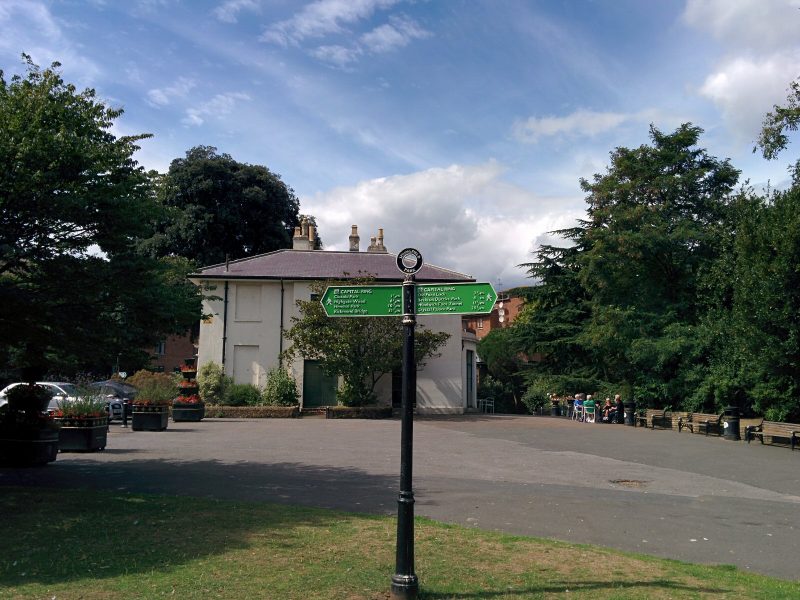
with views down into the Lea Valley:
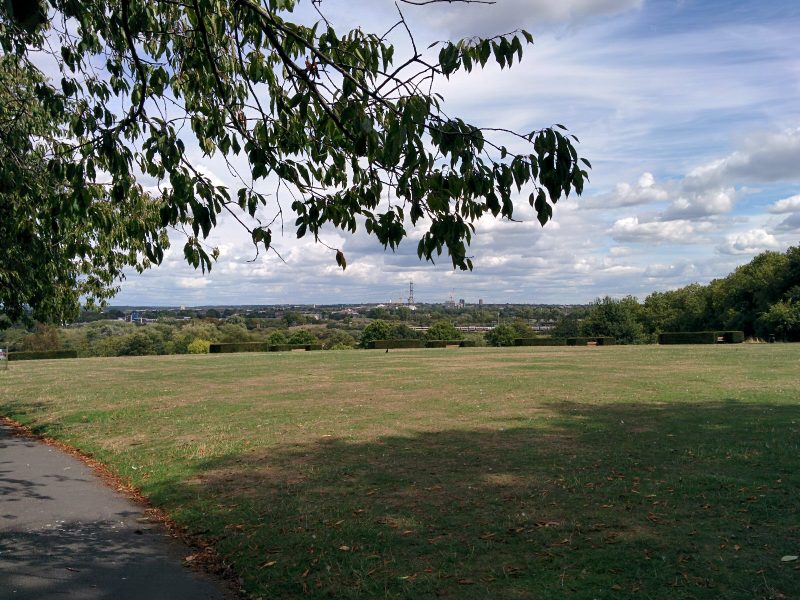
“Springfield Park, opened to the public in 1905, has been designated as London’s first Regionally Important Geological Site – RIGS – and is on the English Register of Parks and Gardens of Historic Interest. The Park’s landforms tell a fascinating story about the geological history of the Lea Valley. The name comes from the series of springs that arise in the area from the combination of sand, gravel and London clay.”
Dropping down the hill, we reach the Horse Shoe Bridge over the River Lea:
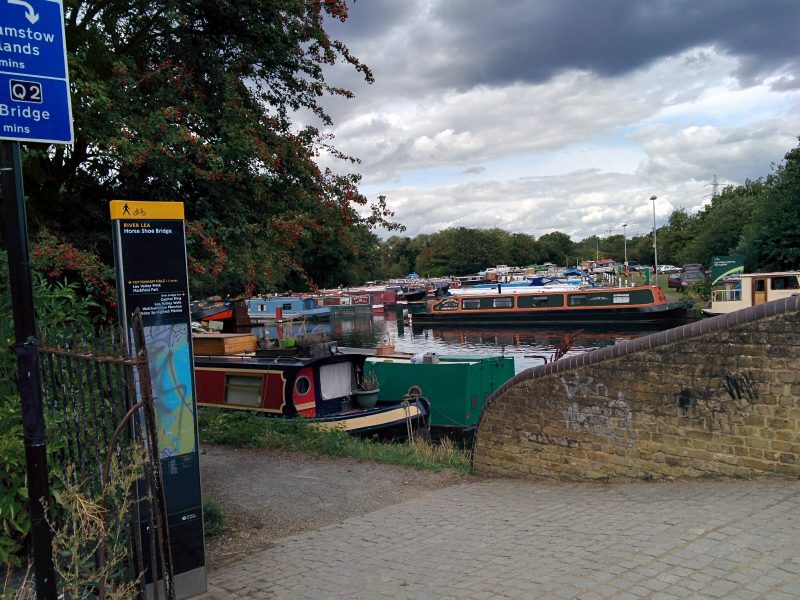
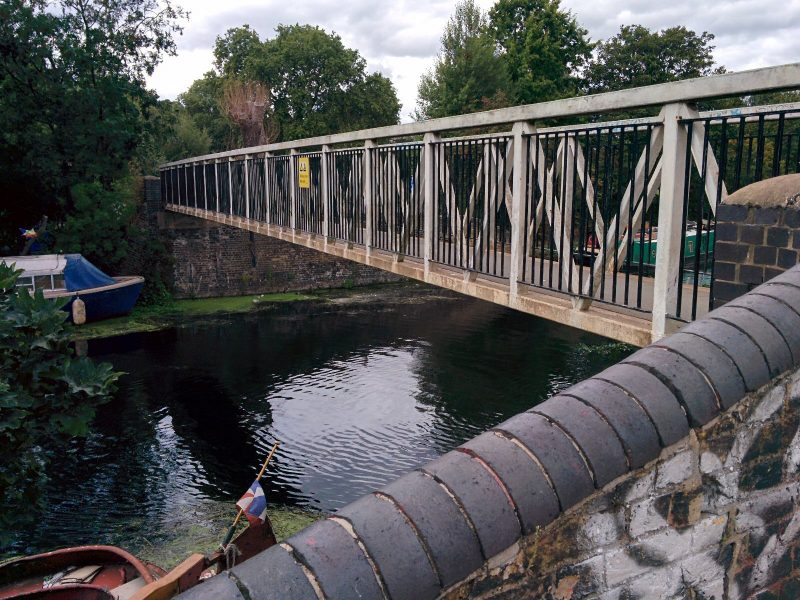
with views of Walthamstow Marshes:
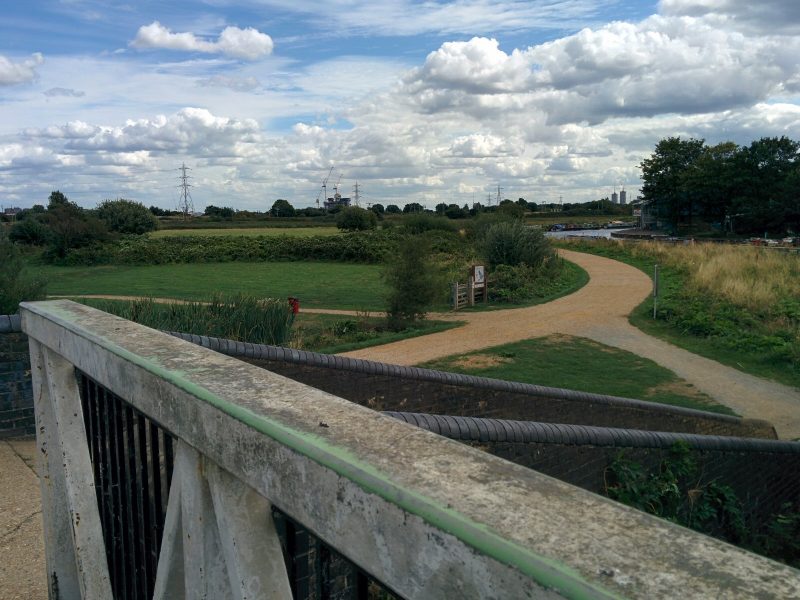
“For centuries the River Lea formed the boundary between Essex and Middlesex. Now it forms the boundary between the boroughs of Hackney and Waltham Forest. Over that time the spelling of the river has caused problems as originally it was Ley, a field covered with grass. Acts of Parliament called it Lee although it appeared as Lea on many maps. There were disputes about the spelling for a long time and to settle them it was decided that the natural aspects of the river, such as river itself, would be spelt LEA and man-made features such as the canal would be spelt LEE.”
The path then follows the river down towards the Thames:
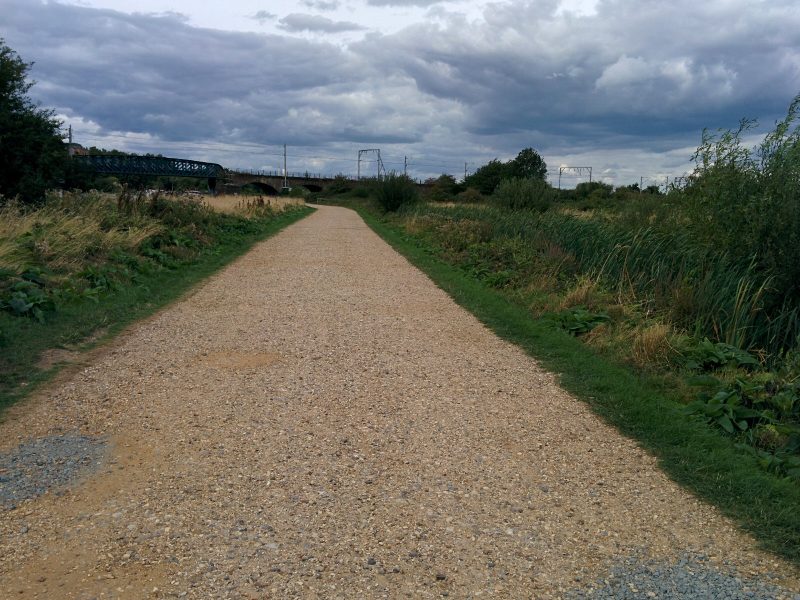
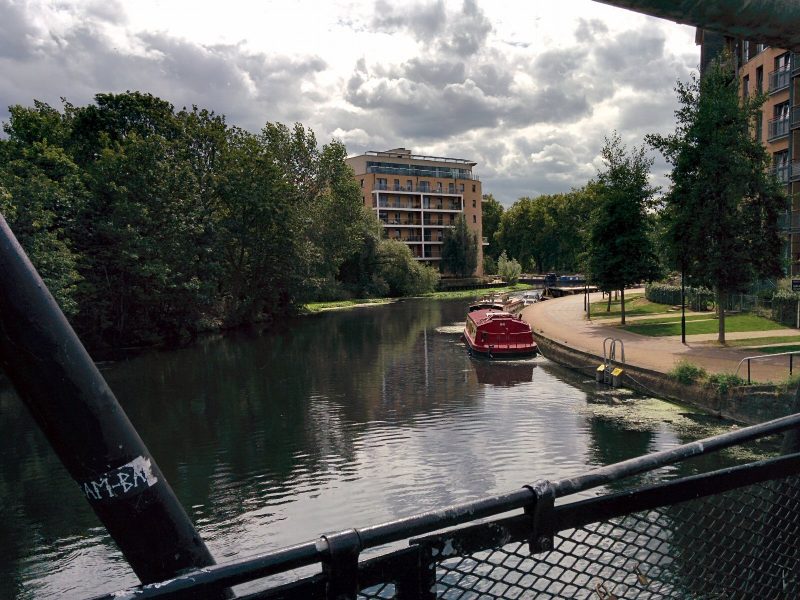
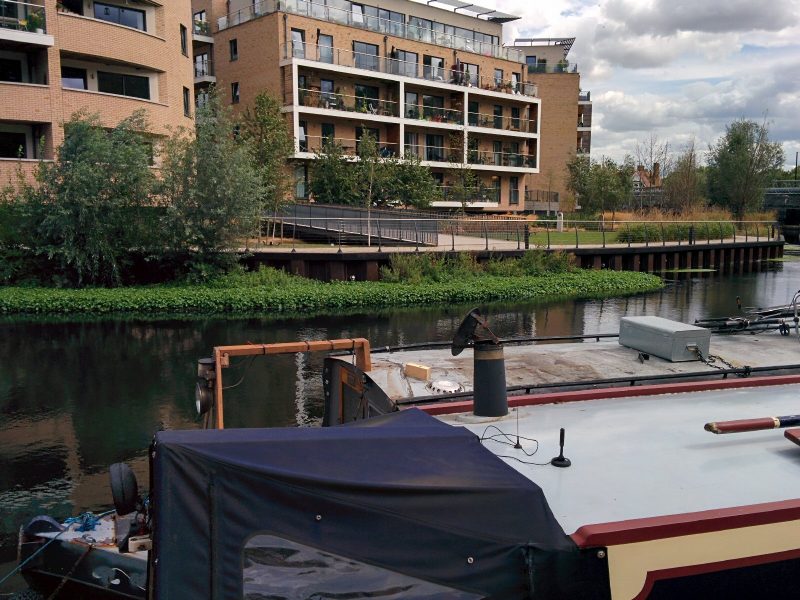
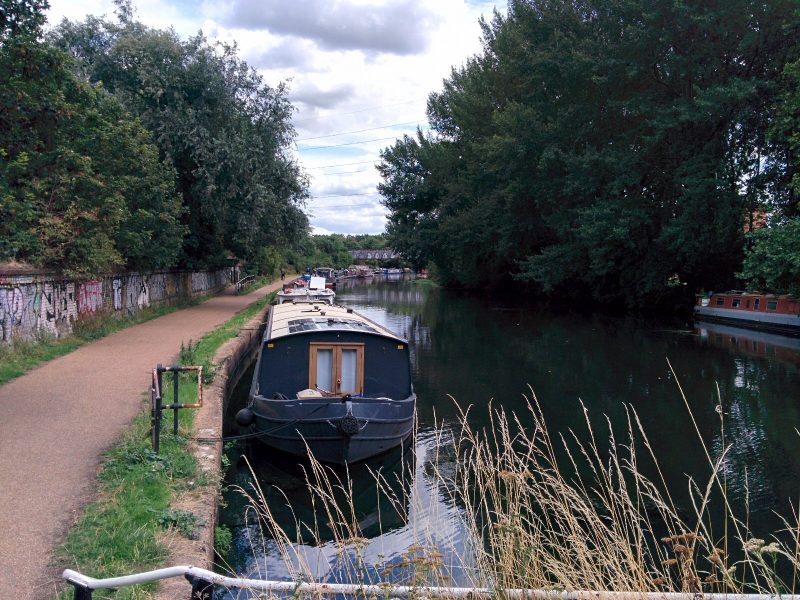
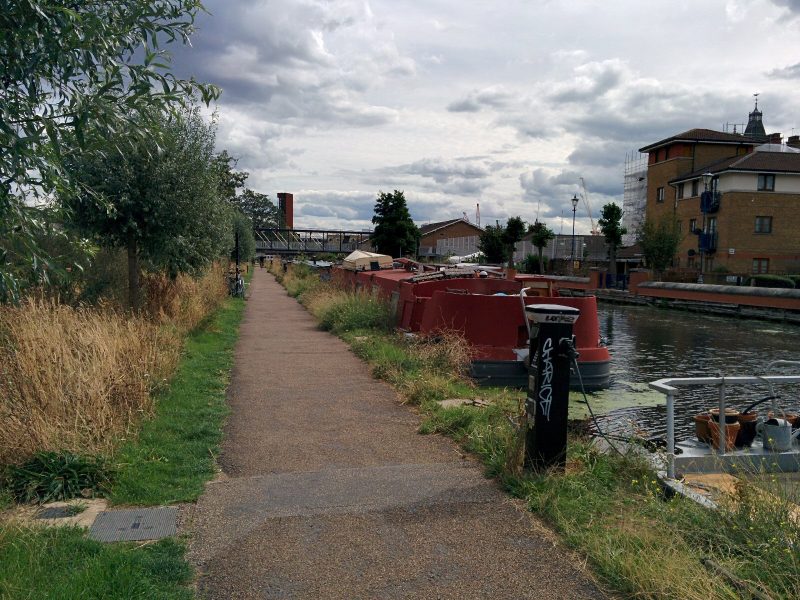
Eventually, the Olympic Park is seen in the distance:
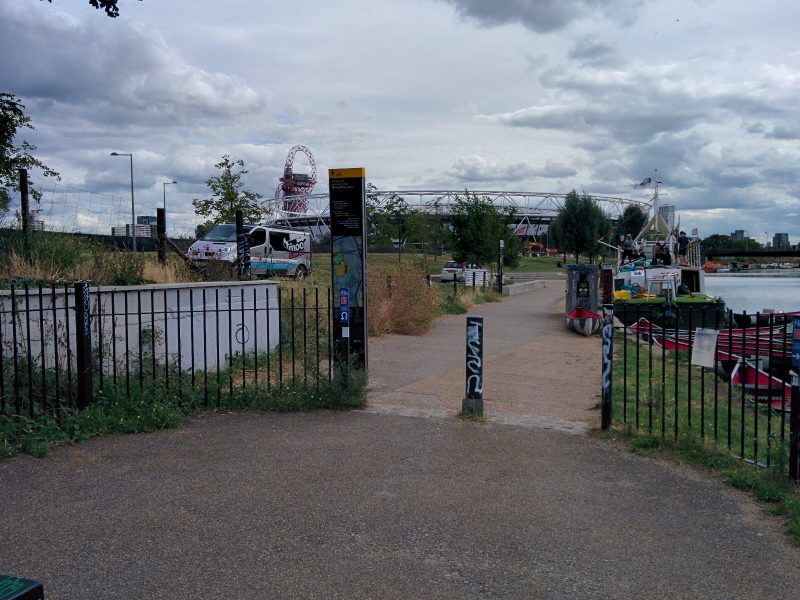
and a short detour leads to Hackney Wick Station and the train home:
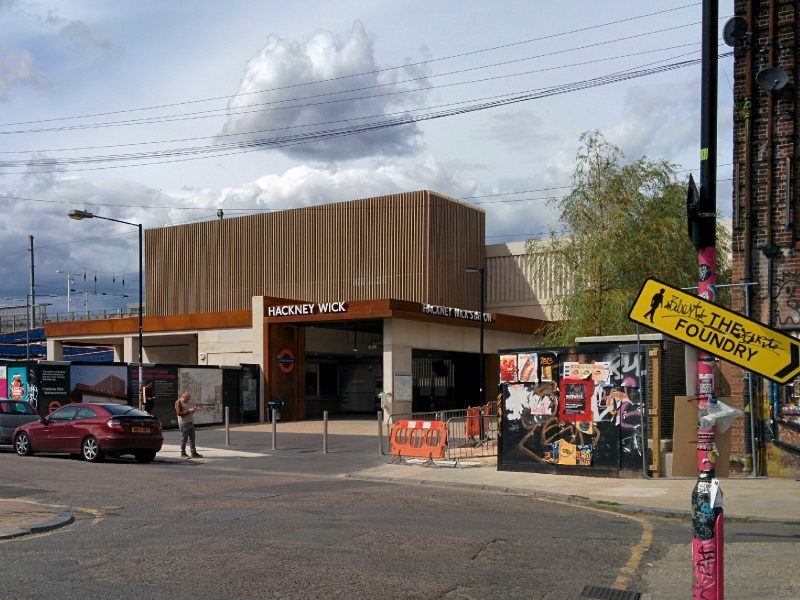
Yet again, all of the last stations that I’ve used on this walk all begin with H – Hanwell, Harrow, Hendon, Highgate and now Hackney Wick!
10 miles of Capital Ring walking today and 5 Geocaches found.
For more information on the Capital Ring, see https://tfl.gov.uk/modes/walking/capital-ring
